- Archive for Marcel Krueger
- Share on: Facebook • Twitter • Google+
- ‹ Previous Post • Next Post ›
- Art & Culture
- Food & Drink
- Historical Berlin
- Walking Berlin
- Contributors

Berlin’s Ghost Stations
Marcel krueger takes a ride on the u6 to explore berlin’s gdr-era “ghost stations”….
I ’ve been fascinated by the subway all my life. Maybe it’s the fact that there’s nothing outside the windows; that when sitting in a subway carriage one has no other choice than to focus on the other passengers—how they look, what they’re doing, what they’re reading—or, god forbid, oneself.
There’s also that unique feeling of descending into the bowels of a city and being propelled from one brightly-lit station to the next through dark, mysterious tunnels. In Berlin, there is the additional sensation of stepping out of the present and directly into subterranean history, since the city’s U-Bahn and S-Bahn were both complicit in transporting border traffic between West Germany and the GDR .
The fact that the city was divided along apparently randomly-drawn borders meant that some of the U-Bahn lines from West Berlin actually travelled beneath East Berlin, though passengers were not able to leave the train until it reached West Berlin again. The stations those trains passed soon became known as ‘ghost stations’ amongst Berliners—dimly lit stops where armed East German border guards would peer at passengers through slits in bricked up huts.
Due to the geography of the boroughs of Wedding in the West and Mitte in the East, the U6 had, after the U8, the second highest number of ghost stations, namely the five stations from Schwartzkopfstraße to Stadtmitte. On a cold March day in a still snow-covered Berlin , I decided to ride the U6 to Friedrichstrasse . I wanted to get a feel for what the underground city may have looked and felt like during those Cold War days, and to simulate a journey from West to East, if only in my head.
I start right at the beginning of the U6, at Alt-Tegel, which opened as just ‘ Tegel ‘ station in 1958 as part of a northern extension of the U6, which had existed since 1923 as the North-South Line between Seestrasse and Tempelhof. In 1992, the station was renamed Alt-Tegel (Old Tegel). As it’s the end of the line, it comprises eight exits, and is an important feeder in summer for people visiting the nearby Tegeler See to explore its pleasure boats and beaches.
On this cold, winter day though, the area reminds me of the small, boring town in West Germany I grew up in: all 1980s plastic and concrete with sharp edges, a Commerzbank, and a C&A next to a café full of huddled, grey-haired pensioners.
Borsigwerke, Holzhauser Straße, Otisstraße and Scharnweberstraße are the next stops on the line, and also part of the 1958 extension. Due to the very high water table, the track was raised onto an embankment, meaning passengers can view the quintessential urban scenery: business parks, small estates, grey and brown houses from the eighties.
The only excitement for me is at Scharnweberstrasse, where one can see glimpses of the planes rolling along the runway of Tegel Airport . Speaking of planes: Kurt-Schumacher-Platz must be the best place in Berlin for plane spotting. There’s something genuinely appealing about standing at the bus stop near the kebab stands and Chinese restaurants and watching the planes roar just 50 metres over your hand on their final approach to the airport.
The locals, long used to the noise and the sight of planes with the landing gear extended, continue strolling and feeding the pigeons without blinking. For visitors like me, it’s hard not to imagine the plane careening into the bus stop rather than the runway behind it.
From Kurt-Schumacher-Platz, the U-Bahn runs underground again, traveling through “wild” Wedding (formerly in the French occupation sector ) along Afrikanische Straße (with the nearby Centre Culturel Français and its very own Eiffel Tower replica), Rehberge (the best stop to explore the Siedlung Schillerpark, a modernist housing estate and UNESCO World Heritage site ), Seestraße and Leopoldplatz—the heart of Wedding , with its brutalist town hall, Schinkel-designed church—and to Reinickendorfer Straße, the former ‘last stop in Berlin West’.
From 1961 on, when the wall was erected, trains from Reinickendorfer Strasse did not stop until Friedrichstrasse. The line reverted back its original name, the C-line, and its trains would pass under the border and through Schwartzkopfstraße then Stadion der Weltjugend, Naturkundenmuseum then Nordbahnhof and Oranienburger Tor at a snail’s pace.
All the station exits were bricked up, and armed border guards or police patrolled the platforms vigilantly. There was barbed wire beneath the platform edge to prevent fugitives from crawling along the tracks, and even the emergency exists were blocked: the only way to leave when a train broke down was to walk along the tracks to the nearest western station.
On the surface, all references to these stations were removed; the GDR did not want to remind its citizens that there were trains rumbling in and out of the capitalist West right beneath their feet. Today, nothing reminds passengers that these stations, now cheerfully painted in yellows and greens, had once been in another country – except maybe a vaguely claustrophobic atmosphere.
The stations seem smaller and more crowded than the ones further up the line, but that could admittedly be my imagination. The atmosphere doesn’t seem to affect the school classes alighting at Naturkundemuseum, nor the noisy group of Spanish tourists entering the carriage at Oranienburger Tor for the short hop to Friedrichstrasse.
Bahnhof Friedrichstrasse is one of the most important stations in Berlin history. Different to the other GDR ghost stations, it was transformed from a former central station for subway, commuter and regional trains into a major border crossing, and became a bottleneck where people from the capitalist west and from the workers’ and peasants’ state passed each other unseen.
The station’s facilities and the underground station were only accessible for passengers from the western sectors transferring here. West Berlin citizens could also avail of the border crossing and enter the GDR here, after passing through a labyrinthine maze of tunnels and walkways designed to prevent any direct contact with GDR-citizens.
East Berliners, on the other hand, could not enter the U- or S- Bahn – the only way to leave the GDR was to get on a long-distance train to West Germany. To do so, GDR citizens had to pass through the so-called “ Tränenpalast ,” the palace of tears, a building on the square north of the station erected in 1962. The expression is derived from the tearful goodbyes that took place in front of the building, where family members with travel permits had to say farewell to their relatives.
After the fall of the wall, the blue glass pavilion of Friedrichstrasse became a cultural centre for concerts and readings, and was eventually turned into the Tränenpalast museum in 2006, enabling visitors to relive the experience of officially crossing from the GDR to West Berlin.
Although there are no tangible traces of the U6’s ghost stations, there is a free exhibition on the subject at Nordbahnhof S-Bahn station (entrance on Gartenstrasse; on the mezzanine), which is open during the station’s hours of operation. Max Gold’s eerie film, stills from which have been used to illustrate this article, can be viewed in full by clicking on the movie above, or here .
By Marcel Krueger on April 16, 2013, in Historical Berlin , Public Transport Updated on: March 15, 2023 More Marcel Krueger 7 minutes
Other posts by Marcel Krueger
Here women stood: the rosenstraße protest of 1943.
Marcel Krueger on the Rosenstraße protest of 1943...
Tegel Prison: A History
Marcel Kreuger charts the fascinating past (and present) of one of Berlin's most famous prisons...
“My child is gone…”
Marcel Krueger on Hertha Nathorff and Berlin's Kindertransport program...
The Music of Resistance: Berlin’s Red Orchestra
Marcel Krueger on Berlin's remarkably brave anti-Nazi resistance group...
Displaced Persons Literature
Marcel Krueger on the Displaced Persons Literature collection of the Berlin State Library...
Plötzensee Prison and Memorial
Marcel Krueger profiles one of Berlin's grimmest memorials...
Anita Berber, Valeska Gert & The Blüthnersaal
James J Conway on pioneering Weimar cabaret performers Anita Berber and Valeska Gert...
Berlin Remembered: A Century Of Memoir & Autobiography
A round-up of Berlin-themed memoirs and autobiographies...
Stories from the City
To celebrate Slow Travel Berlin's fifth birthday: a curated anthology of articles and photography on a wide range of topics and places that you won’t find in the guidebooks.
100 Favourite Places
Instead of highlighting the city’s hippest ‘hotspots’, we’ve taken a more patient and personal approach to bring you 100 special places, many of which would not be mentioned in conventional guides.
Mauerweg: Stories From The Berlin Wall Trail
A documented walk around the entire 160km length of the Mauerweg (Berlin Wall Trail)
Copyright © 2024 Slow Travel Berlin All rights reserved | Log in

- Tour 1 – Dark Worlds
- Tour 1 - Dark Worlds
- Tour 2 - From Flak Towers to Mountains of Debris
- Tour 3 - Bunkers, Subways and the Cold War
- Tour D - Tunnel and Bunker Dresdener Straße
- Tour F - The Fichtebunker Time Capsule
- Tour M - Under the Berlin Wall
- Important notes (about all tours)
- Permanent Exhibition
- Special Exhibition
- General Information
- Subway line 8
- Special Exhibits
- Restoration
- Expeditions and finds
- Oswald Berliner Brewery
- Information Panels
- Commemorative Plaques
- Myth of Germania 2008/2009
- The Beginings
- From “Germania” to the Downfall
- The Cold War in the Underground
- Reunification and Tunnel Opening
Online-Shop
- Data Protection
- Contact Form
- Info- and Bookshop
- Filming Requests
- Event Requests
- Login Intranet
Tour M – Under the Berlin Wall

- Berliner Unterwelten
- Guided Tours
- Public Tours
- Under the Berlin Wall
Hear the stories of the people who tunnelled to freedom
Ever since the SED regime erected the Berlin Wall in August 1961, there have been repeated attempts to cross the deadly barriers through the urban sewer system or self-dug tunnels, thus gaining access to freedom. The first tunnel project “ran” in October 1961, the last failed in 1982. In total, more than 70 tunnels were started, of which, however, only 19 were successful. Through them, over 300 citizens of the GDR managed to make it from East to West Berlin to freedom. There were spectacular successes, betrayals and bitter failures. Soon, a veritable “cat and mouse game” developed between the tunnel builders and the GDR State Security, with increasingly difficult conditions for the escape helpers and refugees. On this two-hour tour, we not only tell stories of the escape tunnels. The Berlin ghost stations, their seemingly perfect security against so-called border violators, and the sealing off of the sewage system against underground escape attempts are also extensively covered. After a visit to the themed exhibition rooms in the civil defence facility in Blochplatz, we travel by “subway shuttle” to Bernauer Strasse, a hotspot during the building of the Wall and a focal point in escape tunnel construction. Over a distance of just 350 metres, the border installations here were tunnelled under seven times. The exceptionally low ground water level made the creation of deeper escape tunnels possible. Near this authentic historical setting, we return to the underground. In the cellars of the former Oswald-Berliner Brewery, we explain by means of original scale tunnel replicas betrayed and failed tunnel projects, as well as the two most successful and spectacular projects from the time of the Berlin Wall – “Tunnel 29” and “Tunnel 57”.
As a highlight an original escape tunnel from 1970/71 can be seen – eight metres below the surface. This is accessed via a visitors’ tunnel approximately 30 metres in length, which was built by Berlin Underworlds over a period of a year and a half. It is the only real escape tunnel which can still be visited today.
Please note that the hygiene and distancing rules must be followed.
After the tour we recommend a visit to the Berlin Wall Memorial documentary centre .
Special Advice, Equipment
Sturdy footwear is obligatory (no sandals or flip flops!).
Please read our important notes about our tours .
Minimum Age, Accessibility
Our tours and exhibitions are not appropriate for children under 7 years of age. We regret that we must therefore refuse entry to children in this age group. The delivery and content of our tours is aimed at adults, and can only be recommended for children aged 14 years or older.
Due to limitations imposed by the structure of the buildings, our tours are not handicapped accessible.
Dates, Duration, Admission
Currently, we offer a limited tour programme in German and English. Dates and tickets can be found in our Online-Shop . Duration: 120 min. Admission: €19 (reduced €15) Our General Terms and Conditions are applicable.
Reservations and Tickets
Tickets for this tour are only available online via our Online-Shop . No ticket sales at the meeting point.
Please note that tickets purchased in advance are excluded from exchange, refund and return.
Tickets purchased in advance must be presented at the entrance of the tour.
Venue (with ticket), public transport
Meeting point with ticket: Badstraße / corner Hochstraße, 13357 Berlin GoogleMaps
Public transport: S+U / DB Gesundbrunnen, Bus 247
Information for groups
The public tours are designed for and aimed at individual guests.
Groups can book this tour on request .
Please visit the section: GUIDED TOURS > TOURS FOR GROUPS for more details.
Tickets for this tour are only available via our Online-Shop. No ticket sales at the meeting point.
Impressions
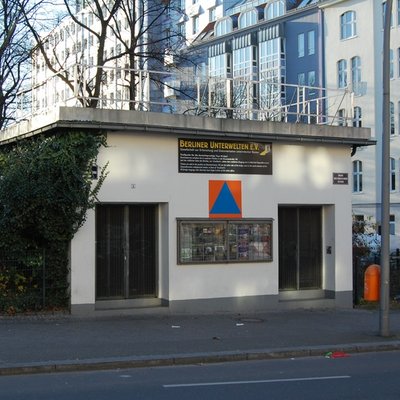
instagram takipçi satın al - instagram takipçi satın al mobil ödeme - takipçi satın al
bahis siteleri - deneme bonusu - casino siteleri
bahis siteleri - kaçak bahis - canlı bahis
goldenbahis - makrobet - cepbahis
cratosslot - cratosslot giriş - cratosslot
Meeting Point
Reichstagufer 17, 10117 Berlin
aged 18 to 64
Senior/Student/Youth
aged 65 and over/7 to 17
WelcomeCard
aged 6 and under
Required Transport Ticket
AB single trip ticket required
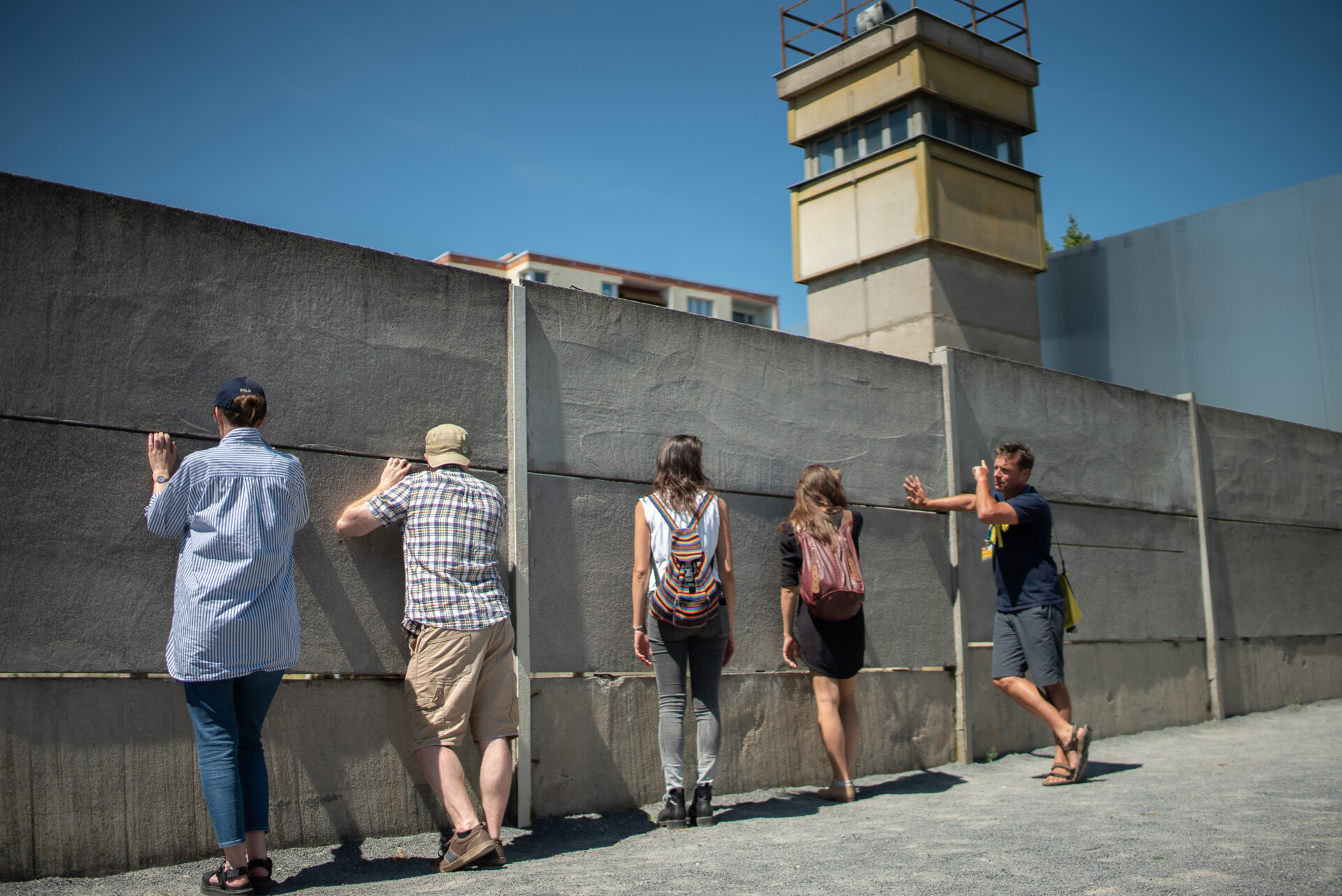
- See the open-air Berlin Wall Memorial and the former “death strip”.
- Stand above the site of two of the most successful escape tunnels to be dug under the Wall.
- Travel through underground stations dubbed “ghost stations” in the Cold War era, and discover what ordinary life was like in a city that was divided for almost 50 years.
- Learn about the Tränenpalast, a border crossing point known as the “Palace of Tears” for the countless emotional farewells it witnessed during the Cold War.
- Visit the Admiralspalast, where the East German SED political party was formed.
- Hear about the East German secret police and their methods of surveillance and torture.
- Go to the Chapel of Reconciliation and discover why its predecessor was blown up in 1985.
- Find out how numerous factors converged to precipitate the fall of the Wall in 1989.
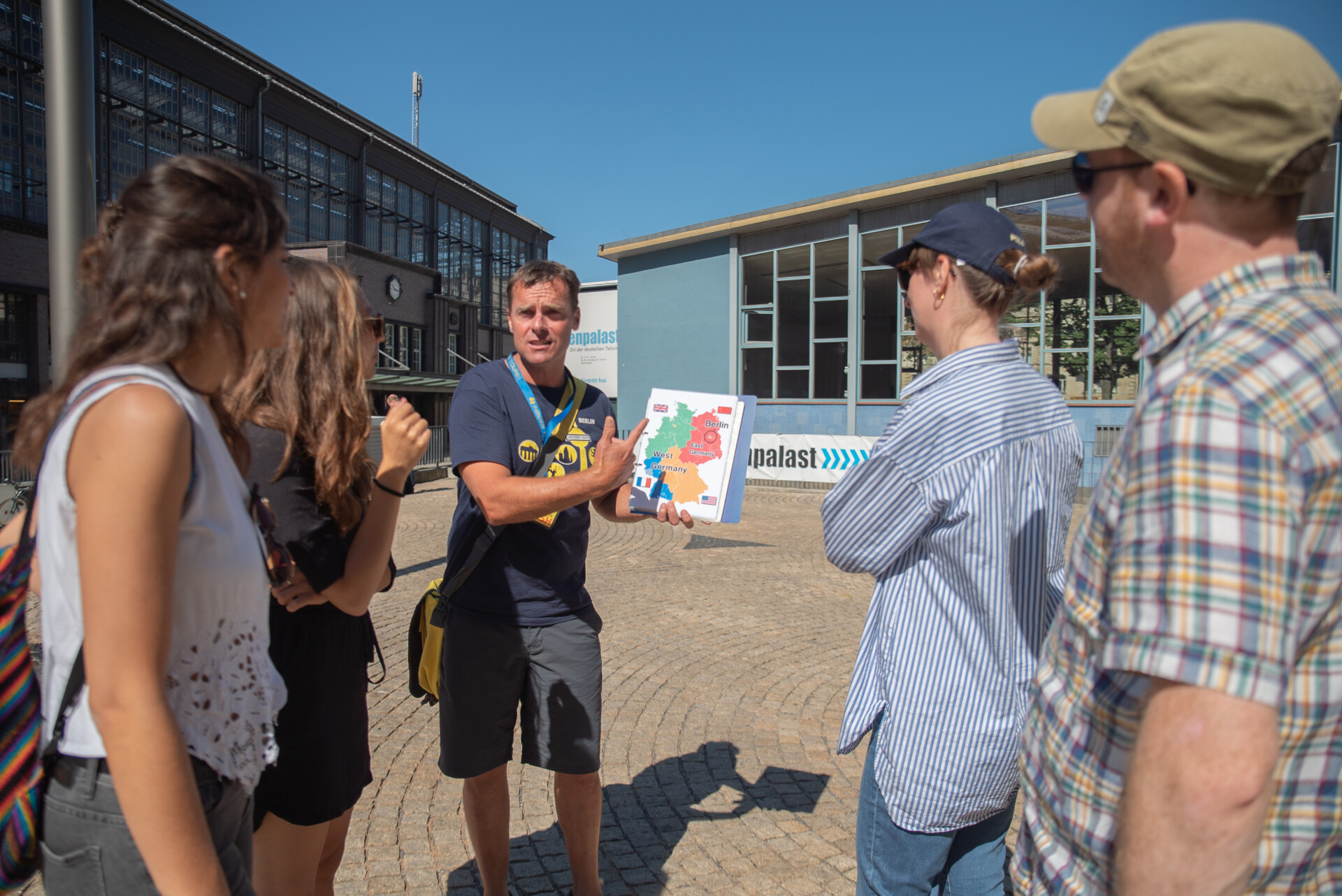
Starting Point
Meet your guide on the square next to the Tränenpalast (Palace of Tears), Reichstagufer 17, 10117 Berlin.
Description
By the end of WWII, Berlin, the capital of defeated Nazi Germany, lay in ruins. Yet it was to become the epicentre of the Cold War, a pivotal city in the struggle between two superpowers to control war-torn Europe. Your specialist guide will take you to one of the longest remaining stretches of the Berlin Wall and share with you the intriguing history behind its construction and how it went up overnight, as well as tragic stories of the impact on Berliners, who woke up the next morning to a divided city.
This top-ranking tour begins with stories of separation at the Tränenpalast departure terminal, today a compelling museum documenting the effects of the border on ordinary people living behind the Iron Curtain. As you ride through Berlin’s former “ghost stations”, your expert guide will explain how the underground transport system provided one possible means of escape from the GDR.
You will be able to get a sense of what it was like to live “behind the Wall” in the Eastern Bloc’s most heavily policed state. Hear of the methods of East Germany’s secret police (the “Stasi”) and the systems, devices and manpower deployed to keep the population under surveillance for 40 years and how they were aided in their efforts to outwit the CIA and MI6 by their comrades and counterparts in the KGB.
The tour makes an essential and extended stop at the Berlin Wall Memorial at Bernauer Straße, where you will be able to see a preserved section of the original wall and the last remaining stretch of the death strip. This is the site of Tunnels 29 and 57, by means of which 29 and 57 determined individuals pulled off daring escapes to West Berlin in the 1960s.
You will hear the extraordinary story of how the Monday Demonstrations culminated in the major East Berlin hub of Alexanderplatz, where in late 1989 half a million citizens peacefully demonstrated for political reform, thereby sounding the death knell for the German Democratic Republic. Your guide will explain exactly what led to the Wall tumbling down on the night of 9 November 1989, setting Berlin on the path to reunification.
Finishing Point
The tour finishes in the area of Bernauer Straße.
Insider Route
This itinerary is intended to give you a general idea of our route on this tour. You can expect to see and hear stories about all of these sites, as well as many more! Please be aware that the route is subject to change on any given day, should unforeseen circumstances arise.
- Meeting point – on the square next to the Tränenpalast (Palace of Tears), Reichstagufer 17
- Admiralspalast – old cabaret theatre where the East German political party, the SED, was formed in 1946
- Tränenpalast (Palace of Tears) – a former border crossing point between East and West Berlin
- Friedrichstraße train station – travel through the “ghost stations” of the old divided Berlin.
- Nordbahnhof S-Bahn station, where a number of border guards fled to West Berlin
- The Berlin Wall Memorial – outdoor exhibition space extending 1.4km along the border strip on Bernauer Straße
- Remnants of the former “death strip” and its fortifications
- The Window of Remembrance – a poignant memorial honouring all 130 victims of the Wall
- Original East German watchguard tower
- Chapel of Reconciliation, built on the site of the church demolished by the East German authorities in 1985
- Site of Tunnels 57 and 29 – the most successful escape tunnels built under the Berlin Wall
- Conrad Schumann mural – the iconic image of this escaping border guard mid-leap over the barbed wire
Insider Reviews
Excellent, informative tour.
I would definitely recommend the Cold War tour. Our guide Xavier was extremely knowledgeable and informative. It was obvious he was enjoyed talking about his subject and went over the odds (and time) to ensure we got the best from the tour. Highly recommended. Deborah O. May '24
Excellent tour and guide.
We had a great tour with Eran. He was very informative and personable. Easy booking, small group of about 10. Highly recommend! Cheryl W. May '25
Cold War Berlin!
Excellent tour given by a knowledgeable and friendly guide! Larry R. May '24
Great tour.
Fabulous morning with Glen. He is really fascinated by the topic and the tour just buzzed with his enthusiasm. He pitched things just right and adapted based our questions. Good booking and organisation. Did 2 tours with same company in 4 days. Sine Apr. '24
A great introduction to Cold War Berlin.
Our guide Mikhail was excellent, striking a good balance between the big picture and the personal histories. This is a great way to understand the circumstances in which the wall rose and fell, and the effect it had on the lives of so many Berliners. Ed E. March '24
Excellent Cold War tour.
The Cold War walking tour of Berlin was fascinating. Our guide was full of detailed historical information as well as intriguing anecdotes and my 21-year-old son and I were riveted throughout. This is a must for everyone who visits Berlin. Heather C. March '24
Very well organised.....
Very well organised from booking onwards. Peter was our guide and provided some really interesting insights into the period. He certainly knew his stuff. Not too much walking and all at an easy pace so very accessible. Would highly recommend spending 3 hours of your visit to Berlin on this tour. Kevin N. Feb. '24
Our guide was excellent.
Our guide George was excellent, his enthusiasm and knowledge made the tour really enjoyable for us all. Mark H. Feb. '24
This was one of the best.
We did a few tours during my two week stay in Berlin. This was one of the best. I had always been a bit confused about East/West Berlin and East/West Germany. Our guide George created a clear context for how it arose, developed and fell apart. We also moved around the city and saw things that tied in nicely to what he was telling us. Thank you so much George - you are one fantastic guide :) Tig G Feb. '24
Fantastic Tour
Gregor was a great guide for our Cold War tour. Our friends we were in Berlin with had never been on a walking tour before but were soon won over by Gregor’s passion for the history of his city & enthusiasm to pass stories on to others. The time passed so quickly & we can’t wait to return to Berlin again to join another Insider tour. David G. Dec. '23
Highly recommended.
Gregor was a superb guide. Excellent in all respects…highly recommended! Julian & Ros W. Nov. '23
Hannah was a great guide...friendly,..
Hannah was a great guide...friendly, moved at a good pace, kept everyone happy, was full of great information and clearly enjoys her work. It was an insightful tour on a complex time. You could talk about this period for hours, but this tour offers a taste for what life was like during this division of Berlin/Germany Elaine Oct. '23
Fascinating Cold War tour.
We had a fascinating Cold War tour with Glen last week. He achieved a great balance of being informative, without overload, and also making it relevant to society today. We covered a lot of ground in the three hours. Glen was hugely knowledgeable about this period, but also sensitive to the many personal tragedies. Would highly recommend. Angela B. Sept. '23
I highly recommend this walking tour..
I highly recommend this walking tour - Eran really knew his subject & answered all questions. We met at the Palace of Tears & went on to Bernauer Strasse seeing a ghost station, remnants of the wall, no man's land & sites of tunnels. Fi M. Sept. '23
Interesting and entertaining..
Glen was an excellent guide. He obviously knew a lot about the subject and was able to pass his knowledge on in an easy and enjoyable way. I loved the finish at Karl Marx Alley. Dave D. Sept. '23
Happy to recommend this tour.
Happy to recommend this tour. Glen was very informative. Mikes B. Sept. '23
The Cold War Berlin tour was essential...
The Cold War Berlin tour was essential to having an understanding of East/West Berlin during this period. Our tour guide was clear, straightforward and very informative highlight specific stories throughout. I have now taken 3 Insider Tours and they have all been excellent. Valerie C.B. Aug. '23
Fascinating tour.
It was a fascinating tour, Tobi was great. He gave us a great insight into life in the East. I went with my two boys 20 and 16 and they both enjoyed it too. Highly recommended. Tania B. Feb. '23
Great tour with a great guide.
10/10-learned SO much, had a great experience! Greta G. Apr. '23
Highlight of our trip.
This was an excellent tour. Our guide was interesting, informative and entertaining. He clearly has great interest in cold war history of Berlin and his enthusiasm for the subject made the tour. Petterson May '23
Book this tour!
Our guide is clearly an extremely intelligent, highly educated man who is obviously passionate about 20th century history and particularly Berlin. As a British man now living in Berlin with a German wife and friends, he was well positioned to give a broad spectrum view of the city and it’s recent history. T Lau April '23
Amazing Cold War tour.
Had an amazing time yesterday on the Cold War tour. We went to some of the best landmarks as our guide explained the political and social situation. For a 3 hr tour and a coffee break halfway through I thought this was a great value! There were about 8 people in our tour. Highly recommended. Thank you! H Hansen April '23
A Cold War tour to remember.
Our guide was REALLY AMAZING! His presentation and attention to detail was second to none. This tour is incredibly informative about the Cold War, and even those not interested in history or knowledgeable on the subject would have an amazing time. We saw some locations around Berlin I would never know to find on my own, and our tour guide was able to answer all questions I had. Overall I would HIGHLY recommend this tour Johnny Oh May '23
Really good walking tour.
Did a walking tour of Cold War Berlin with a lovely young guy, who was very knowledgeable, engaging, considerate and excellent at telling describing the history and telling the stories. A particular highlight was his quick history of he Cold War using chalk on on the pavement. A wonderful 3 or so hours that went by too quickly. Darius March '23
This tour makes you understand the city of Berlin.
This tour really made impact on the East and West Berlin situation, both during the cold war period and beyond. Mainly thanks to our tour guide Glen. He has an extensieve knowledge on life and history of Berlin. This tour makes you understand the city of Berlin and her residents. Hans K. June '25
A nice blend of history and stories.
Jamie was a great guide- a nice blend of stories and context. My 11 year old, who is basically done with tours, said it was one of his favorites, which is high praise.
Cold War Tour with Maria and Insider tours.
Had the Cold War tour with Maria today and as usual with Insider Tours it was excellent.Maria interjected how some of our tour points of interest were used in movies and this made it all the more informative from a personal point of view.
Insider tours has always been my go.....
Insider tours has always been my go to option for tours in Berlin. Friendly and very knowledgeable guides.
Fantastic Experience!
Even though it was cold and rainy, our guide Nikolai made it a fantastic experience. Really engaged and knowledgable waving in personal experience along the way. Thank you for a great morning around Berlin. Marie_E

- Suche aktivieren Stichwort / Suchbegriff Suche starten
- Einfache Sprache
- English English
- Deutsch Deutsch
Facebook Instagram Instagram
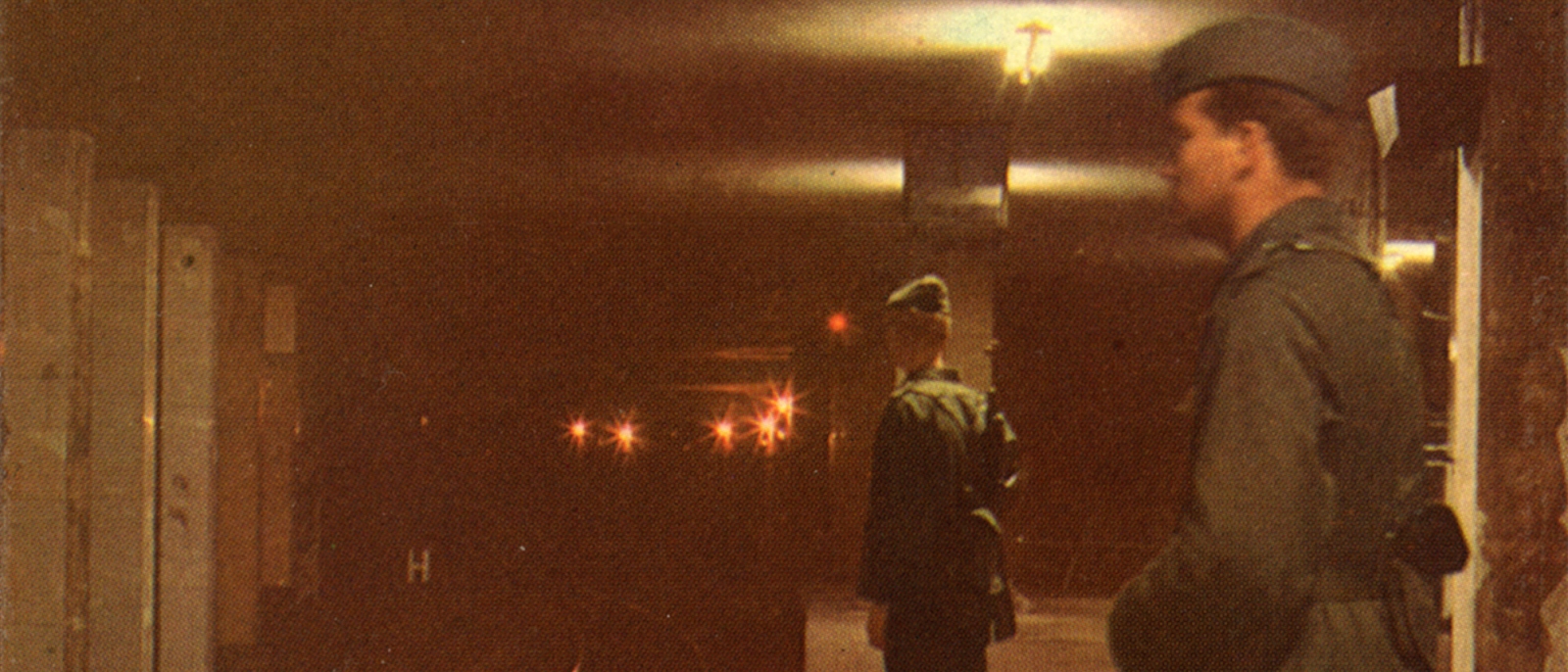
© BStU, signature MfS ZAIG/Fo/554-Bild 11
Border Stations and Ghost Stations in Divided Berlin
An exhibition in the Nordbahnhof S-Bahn station focuses on a special chapter in Berlin’s history of division: the three U-Bahn and S-Bahn lines that crossed through East Berlin on their way from one end of West Berlin to another. B etween 1961 and 1989 these lines had a special status within the city’s divided public transport system . The exhibit describes how the trains passed through the closed-down and guarded stations along these U-Bahn and S-Bahn lines in East Berlin, slowing down, without ever coming to a complete halt. It also addresses underground escapes attempts and the border fortifications installed beneath the surface. The exhibition uses the Berlin underground system to elaborate on themes addressed in the memorial: the city’s division, the mass exodus to the West, and living with the border.
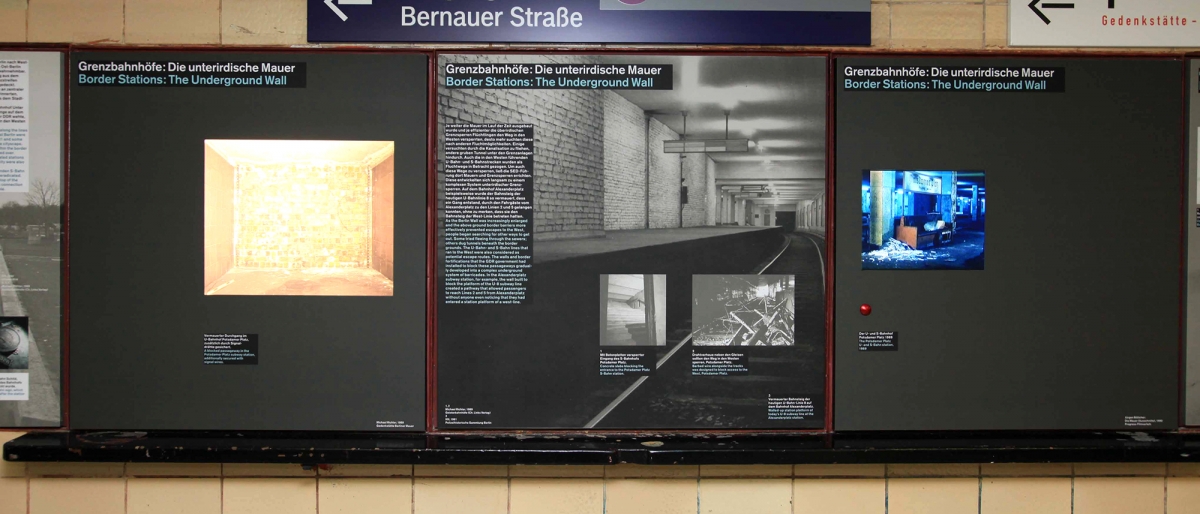
View of the exhibition on the mezzanine floor of the Nordbahnhof, 2009, Photo: J. Hohmuth, Berlin Wall Memorial
Publication
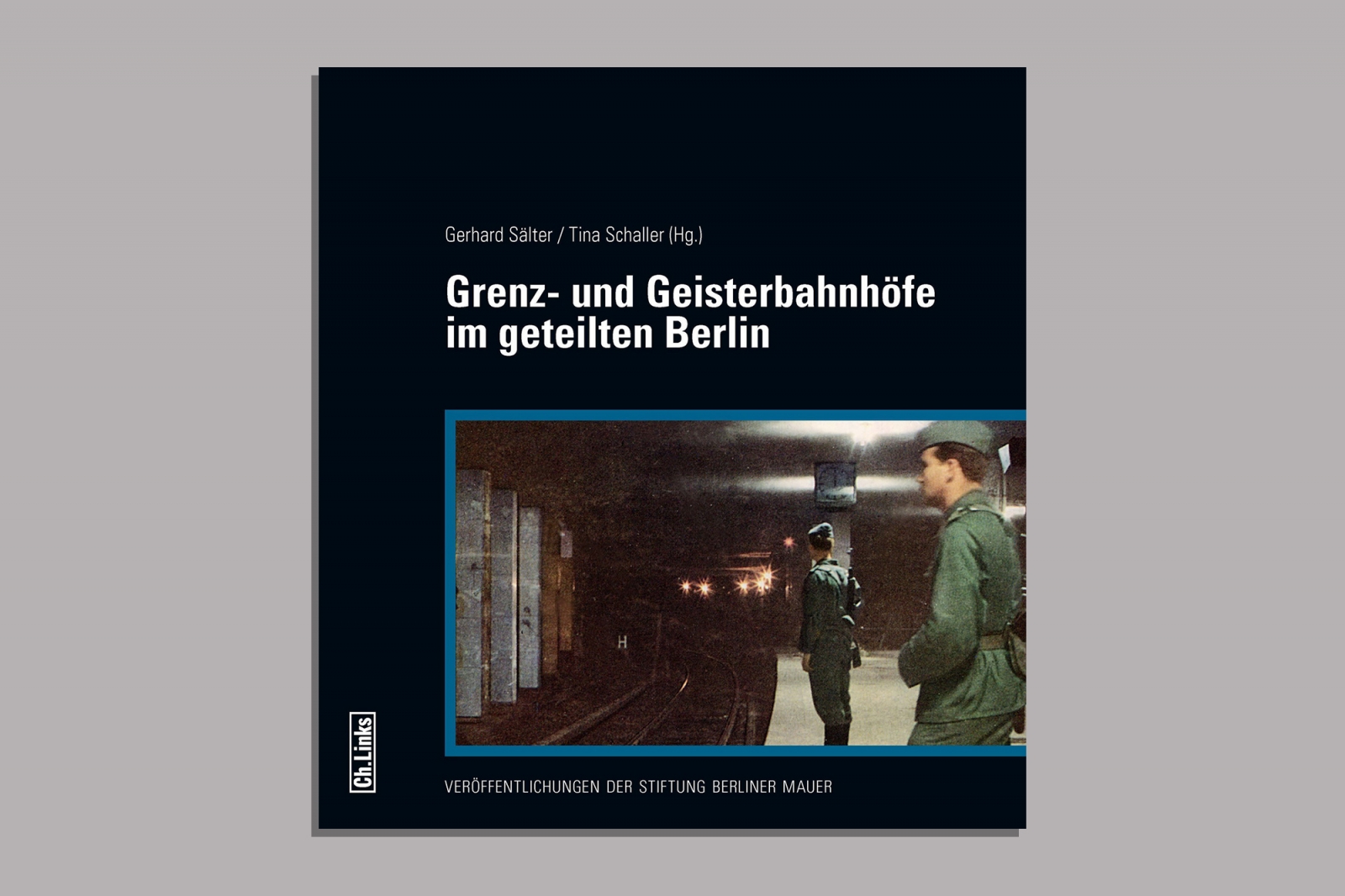
In the companion volume to the exhibition, 14 essays address the underground border situation, accompanied by impressive and rarely seen photographs.
When the Wall was built, many S-Bahn and U-Bahn stations in Berlin became so-called ghost stations. Participants will follow in the footsteps of the ghost stations in and around Nordbahnhof and have the exclusive opportunity to visit a pedestrian tunnel that has been closed since 1952.
Meeting point: Visitor Center of the Berlin Wall Memorial
Languages: German
Date and Time,
- 2. June 2024 13:00 - 14:30
Berlin Wall Memorial Bernauer Straße 111/119, 13355 Berlin
+49 (30) 213085213
www.stiftung-berliner-ma…
Admission price 5,00 €
Pupils free of charge
Reduced price 3,00 €
Related Exhibition
Admission price, reduced price.
Berlin Wall Memorial
More Events
Overview guide in easy language.
Guided Tour
Bernauer Strasse after the Wall was built
Harmonies of unity - history meets music, music, contemporary witness talk, 35 years of the fall of the wall.
Concert, Lecture, talk, Miscellaneous
Everyday life in the GDR - photos from the 1980s by Mahmoud Dabdoub
Book launch & exhibition opening.
Miscellaneous
Everyday life in the GDR: photos from the 1980s by Mahmoud Dabdoub
Exhibition opening and book launch.
Lecture, talk

Bernauer Strasse after the Wall was built - tactile tour
Touch guidance, overview tour in english, children's tour: who wants to become a "wall expert", children's tour.
Sanssouci Palace
Galant festivities in Sanssouci
An evening tour of the french paintings with curator franziska windt, spsg.
Humboldt Forum
Empty showcases? About Handling Objects from Tanzania - Guided Tour in English
Museumsinsel Berlin
Welterbe Museumsinsel
Cookie-policy.
We use cookies to provide the best website experience for you. By clicking on "Accept tracking" you agree to this. You can change the settings or reject the processing under "Manage Cookies setup". You can access the cookie settings again at any time in the footer. Privacy | Imprint
- Generation Tours
Discovering Cold War Berlin: Six Places to Visit

Berlin Wall Memorial

Palace of Tears – (Tränenpalast)
Ghost stations – geisterbahnhöfe.

Television Tower (Fernsehturm)

Karl Marx Allee and 'Stalin's bathroom'
Soviet war memorial (treptower park).

- Recommended tours
- Travel Tips
- Tour Operators
- Uncategorized
- Solo travel
- 27 May, 2024 Funtastic Hungary – 5 great festivals to visit in Hungary this summer
- 17 August, 2023 If August, Jazz Piknik at Lake Balaton
- 8 February, 2023 5 Utterly Unique Tours you can only do in Dublin!
- 11 January, 2022 Saint Patrick's Day 2022 in Dublin - all you need to know!
- Terms and conditions


UEFA EURO 2024
All about the European Football Championship in Berlin
- Menu Berlin Welcome Card
- Menu Event calendar
- Menu Newsletter
- Contrast Contrast
Border Stations and Ghost Stations in Divided Berlin
When the Berlin Wall was built on August 13, 1961, it divided the city as well as the transportation system. But two subway (U-Bahn) lines and one commuter rail (S-Bahn) line with departure and destination stations in West Berlin continued to run through the eastern sector.
Image gallery
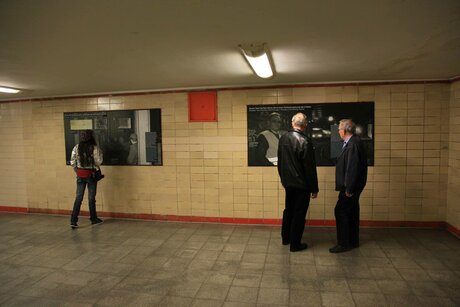
Ausstellung S-Bahnhof Norbahnhof
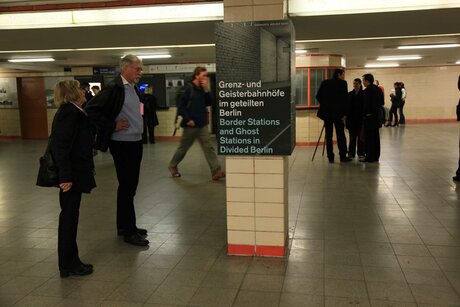
Ausstellung Zwischengeschoss S-Bahnhof Norbahnhof
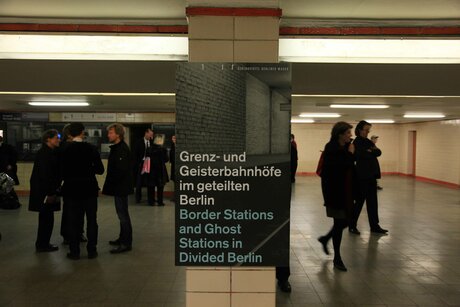
- Free of charge
- permanent exhibition
- Share on Facebook Share on Facebook
- Share on X Share on X
- Share by email Share by email
- Print page Print page
Searching for traces of democracy
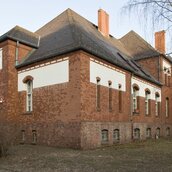
Exhibitions
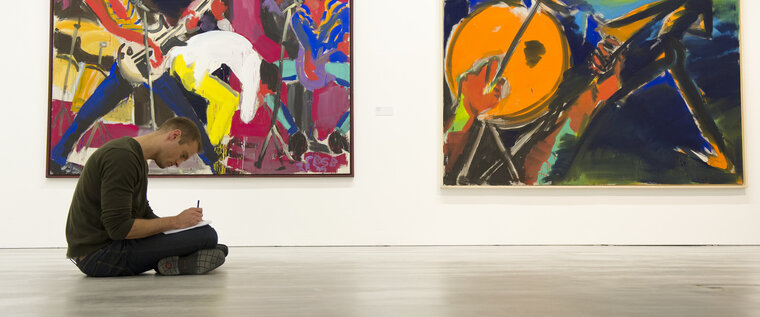
Master carpenter Brunzel builds an apartment house
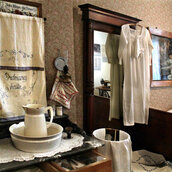
Cold War Berlin
Private guided tour.
The Rise and Fall of Communist East Germany
At the heart of The Cold War
Unlike any other place in Europe, the Berlin Wall symbolised the division of the continent into East and West for the duration of the Cold War. Until 1989, the so-called Iron Curtain, which resembled a front line of war, twisted through Berlin's streets and the lives of its citizens. On this 4 hour private guided tour, your professional and specialist guide will take you on an unforgettable journey through the streets of the Cold War capital. Explore the former Soviet sector of Berlin, hear stories about life behind the Iron Curtain. Learn how the GDR and the Stasi (State Security), the largest spy network the world has ever seen, maintained control over their population for 40 years. Hear exciting spy stories from MI6, the CIA and the KGB. Walk along Bernauer Strasse, the famous site of many fascinating escape attempts and view the death strip from above.
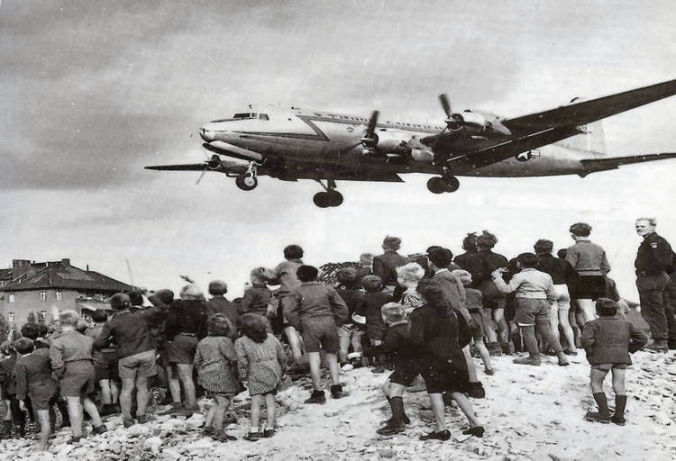
The East German government had begun sealing off the East German border to West Germany as early as 1952, making it increasingly dangerous to flee directly to the West. Many chose to take advantage of the last means of escape, and reached West Germany by crossing the sector borders through to West Berlin. In the early hours of August 13, 1961, Berliners living in the east of their city were awakened by the moaning of heavy machinery rolling hastily through their streets toward the boundary that separated the eastern and western parts of their city. Confounded citizens looked on as East German soldiers dug holes and tore up sidewalks, making way for barbed wire that would close off the dividing line. Armed troops manned the crossing points between the two sides and, by morning, a ring of Soviet soldiers surrounded the city. Overnight, the right to pass between the two sections of Berlin had ended. Running through cemeteries and canals, criss-crossing through the city streets, the Berlin Wall was a shocking representation of the Iron Curtain that separated all of Europe between competing ideologies. Berlin was always the centerpiece of the Cold War and on multiple occasions very nearly the front line of real combat.
Negative Corona test for guides provided upon request
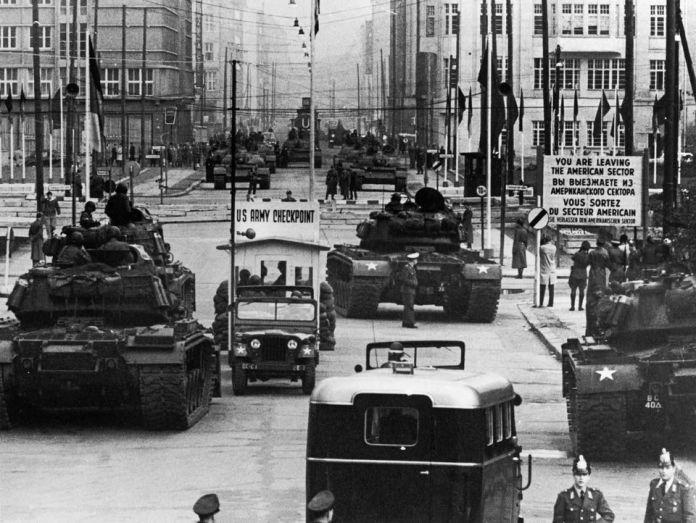
Cold War Private Tour
Step back in time and discover Cold War Berlin. Learn about life in divided Berlin, walk along the Berlin Wall and recount spy stories from the Cold War Capital.
The Cold War Private Guided Tour Itinerary
- WWII & Germany's division
- Berlin Wall Memorial
- Life in the DDR
- Palace of Tears
- The Formidable Russian Embassy & Soviet War Memorial
- Former Berlin Ghost Stations
- TV Tower & Alexanderplatz
- Communist ideology, Propaganda, & Art
- 17th June 1953 Uprising
- Karl Marx Allee - Former Stalin Allee
- Reichstag Parliament & German Reunification
- Wall Tragedies & Escape Stories
Hotel Pickup
Private guide, flexible itinerary.
Stay Away from the Crowds with a private tour of Berlin. Explore the city with a knowledgeable, experienced guide!
Bespoke Berlin Tours
Personalized itineraries. flexible schedules. private small groups. our city your way. .
Our private guided Berlin tours can be customized to suit your requirements. We will organize an itinerary specifically suited to match your wishes and desired tour length.
Private Tours Berlin are committed to providing exceptional guided history tours to all customers: travel agents, organizations, groups, families and individuals.
Small groups
Families
School groups
Corporate groups
Funders & sponsors
Colleges and universities
Journalists & researchers
Conference groups
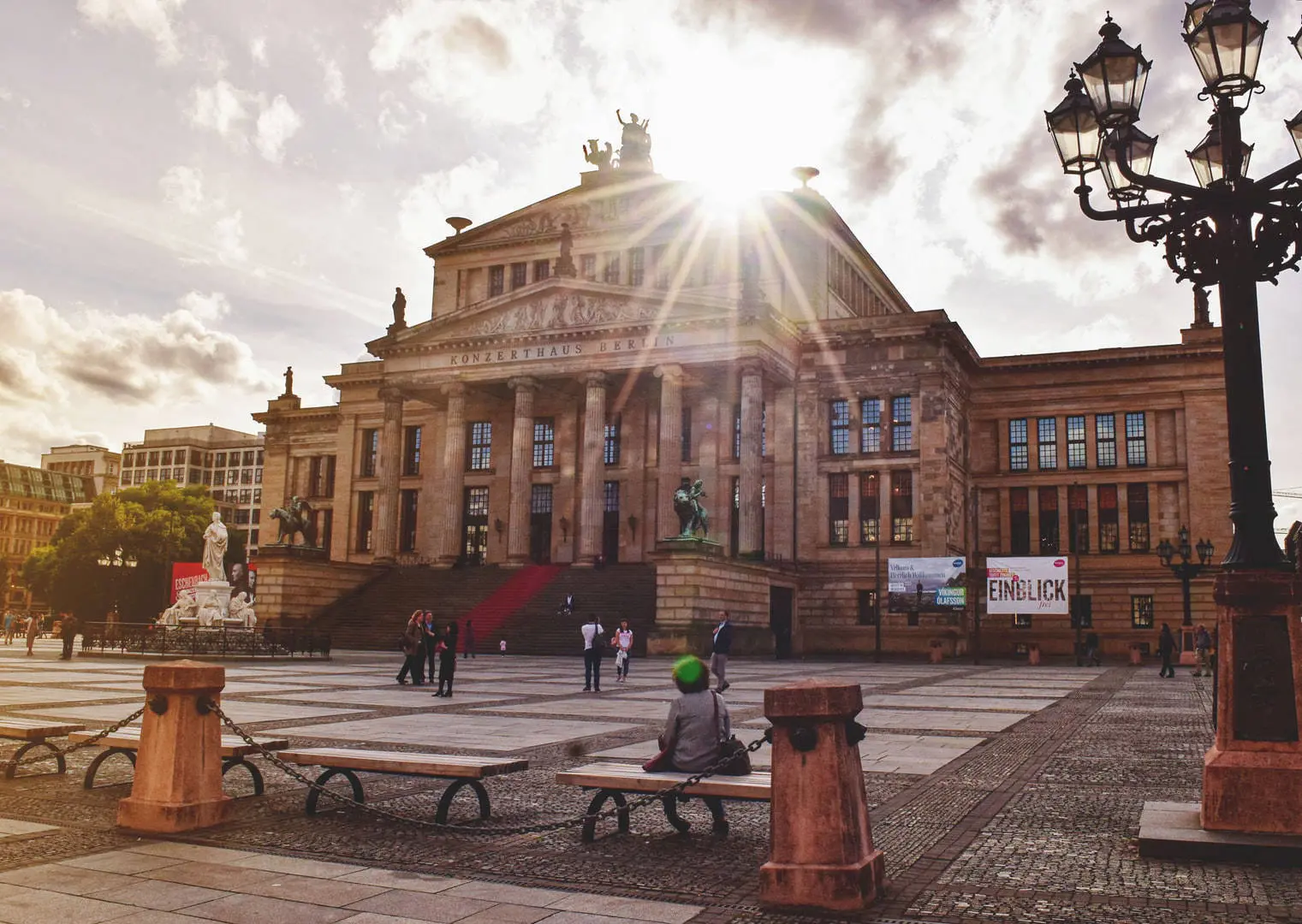
The Best of Berlin Private Tour
The comprehensive Berlin highlights tour... 4 hrs €240/Group
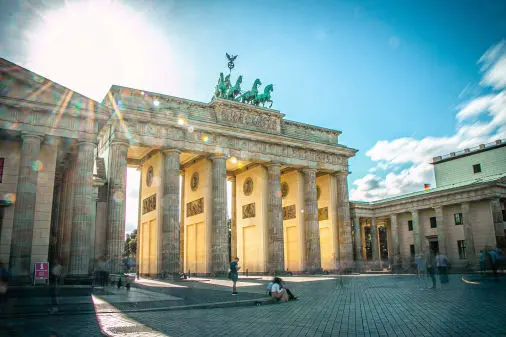
2-Hour Private Berlin Tour
Condensed Private guided tour for those with limited time... 2 hrs €150/Group
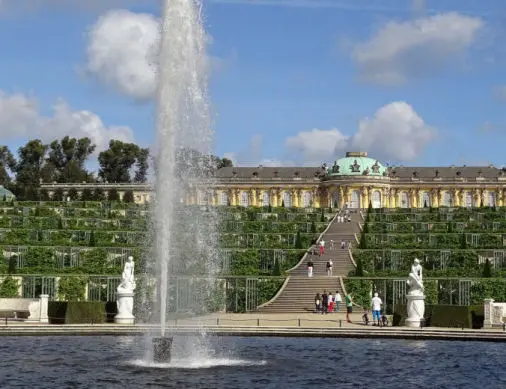
The Best of Potsdam Private Tour
Your private half-day tour to stunning Potsdam... 6 hrs €315/Group
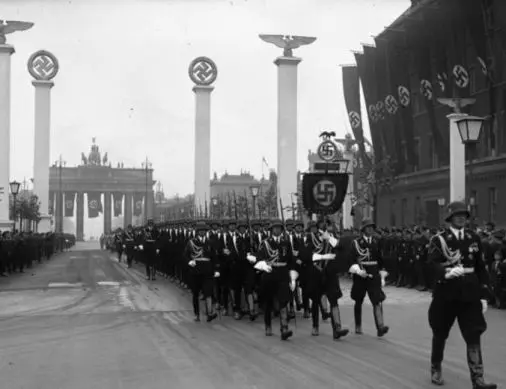
Berlin, Hitler & The Third Reich
Half-day private guided tour with your specialist guide... 4 hrs €245/Group
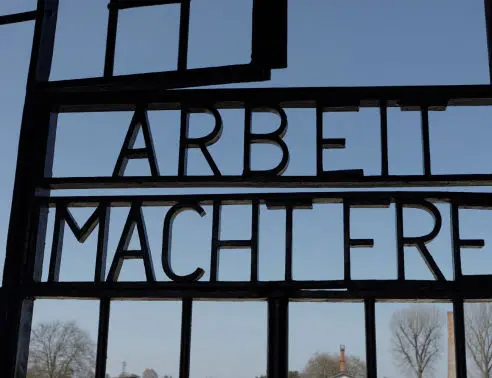
Sachsenhausen Camp Memorial
Private visit to Sachsenhausen Concentration Camp Memorial... 6 hrs €315/Group
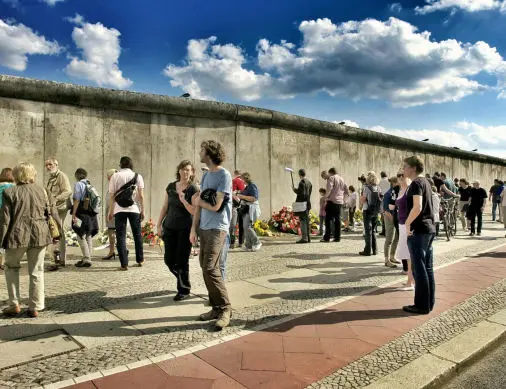
Cold War Berlin Private Tour
Berlin was the front line of the cold war. Visit the sites of the divided capital... 4 hrs €245/Group
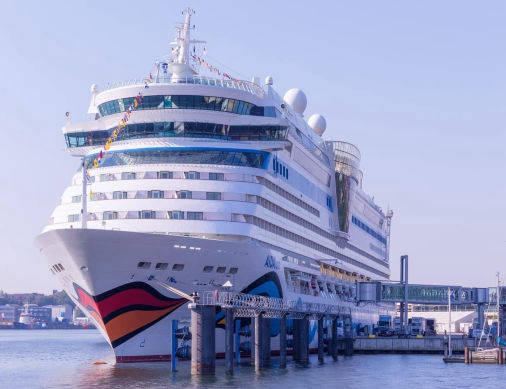
Shore Excursion to Berlin
The very Best of Berlin on your all-in-one shore excursion from Warnemunde... 12 Hours
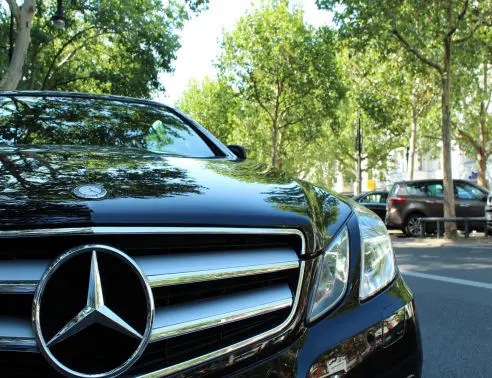
Chauffered Tours
Berlin highlights from the comfort of a private vehicle. The route will be arranged prior to your trip...
Discover Berlin
Private Tours Berlin have provided exceptional private Berlin guided city tours to anyone travelling to Berlin, Germany since 2007. Our speciality is delivering relaxed, attentive and fully private Berlin city tours that go beyond the typical crowded tourist traps to reveal the real Berlin that us locals know and love. We do this with a flexible approach that gives our guests the best service and experience. Book today and enjoy the peace of mind of touring with one of Berlin’s highest rated tour operators.
100% Private
All our experiences are private, meaning exclusively for you.
Bespoke Experiences
Tours that are tailored to you, so you can make the most of your time in the city.
Dynamic Passionate Guides
Our experienced guides are Berlin’s finest, ensuring a memorable tour.
..up to 15 Guests 4 hrs €245
Explore Berlin with a knowledgeable, experienced guide and see what others miss!

About Terms/Imprint Privacy Contact
© Copyright 2024 Private Tours Berlin - All Rights Reserved.
Matador Original Series
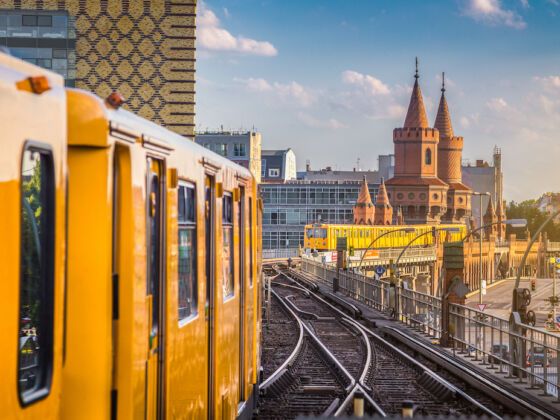
The Ghost Stations of Berlin's U-Bahn
I’VE BEEN fascinated by the subway all my life. Maybe it’s the fact that there’s nothing outside the windows, that when sitting in a subway carriage one has no other choice than to focus on the other passengers — how they look, what they’re doing, what they’re reading — or, god forbid, oneself.
There’s also that unique feeling of descending into the bowels of a city and being propelled from one brightly lit station to the next through dark, mysterious tunnels.
In Berlin, there is the additional sensation of stepping out of the present and directly into subterranean history, since the city’s U-Bahn and S-Bahn were both engaged in transporting border traffic between West Germany and the GDR.
The fact that the city was divided along apparently randomly drawn borders meant some of the U-Bahn lines from West Berlin actually traveled beneath East Berlin, though passengers were not able to leave the train until it reached West Berlin again. The stations those trains passed soon became known as “ghost stations” amongst Berliners — dimly lit stops where armed East German border guards would peer at passengers through slits in bricked-up huts.
Due to the geography of the boroughs of Wedding in the West and Mitte in the East, the U6 had, after the U8, the second highest number of ghost stations, namely the five stations from Schwartzkopffstraße to Stadtmitte. On a cold March day in a still snow-covered Berlin, I decided to ride the U6 to Friedrichstrasse. I wanted to get a feel for what the underground city may have looked and felt like during those Cold War days, and to simulate a journey from West to East, if only in my head.
On this cold, winter day, though, the area reminds me of the small, boring town in West Germany I grew up in: all 1980s plastic and concrete with sharp edges, a Commerzbank, and a C&A next to a café full of huddled, grey-haired pensioners.
Borsigwerke , Holzhauser Straße , Otisstraße , and Scharnweberstraße are the next stops on the line, also part of the 1958 extension.
Due to the very high water table, the track was raised onto an embankment, meaning passengers can view the quintessential urban scenery: business parks, small estates, grey and brown houses from the ’80s.
The only excitement for me is at Scharnweberstrasse, where one can see glimpses of the planes rolling along the runway of Tegel Airport.
Speaking of planes: Kurt-Schumacher-Platz must be the best place in Berlin for plane spotting. There’s something genuinely appealing about standing at the bus stop near the kebab stands and Chinese restaurants and watching the planes roar just 50 metres overhead on their final approach to Tegel.
The locals, long used to the noise and the sight of planes with landing gear extended, continue strolling and feeding the pigeons without blinking. For visitors like me, it’s hard not to imagine the plane careening into the bus stop rather than the runway behind it.
From Kurt-Schumacher-Platz, the U-Bahn runs underground again, traveling through “wild” Wedding (formerly in the French occupation sector) along Afrikanische Straße (with the nearby Centre Culturel Français and its very own Eiffel Tower replica), Rehberge (the best stop to explore the Siedlung Schillerpark, a modernist housing estate and UNESCO World Heritage Site), Seestraße, and Leopoldplatz — aka the heart of Wedding, with its Brutalist town hall and Schinkel-designed church — and to Reinickendorfer Straße , the former “last stop in Berlin West.”
From 1961 on, when the wall was erected, trains from Reinickendorfer Straße did not stop until Friedrichstrasse. The line was then called the C-line, and its trains would pass under the border and through Schwartzkopffstraße (then Stadion der Weltjugend), Naturkundenmuseum (then Nordbahnhof), and Oranienburger Tor at a snail’s pace.
All the station exits were bricked up, and armed border guards or police patrolled the platforms vigilantly. There was barbed wire beneath the platform edge to prevent fugitives from crawling along the tracks, and even the emergency exists were blocked — the only way to leave when a train broke down was to walk along the tracks to the nearest Western station.
On the surface, all references to these stations were removed; the GDR did not want to remind its citizens that there were trains rumbling in and out of the capitalist West right beneath their feet. Today, nothing reminds passengers that these stations, now cheerfully painted in yellows and greens, had once been in another country — except maybe a vaguely claustrophobic atmosphere.
The stations seem smaller and more crowded than the ones further up the line, but that could admittedly be my imagination. The atmosphere doesn’t seem to affect the school classes alighting at Naturkundemuseum, nor the noisy group of Spanish tourists entering the carriage at Oranienburger Tor for the short hop to Friedrichstrasse.
Bahnhof Friedrichstrasse is one of the most important stations in Berlin history. Different to the other GDR ghost stations, it was transformed from a former central station for subway, commuter, and regional trains into a major border crossing, and became a bottleneck where people from the capitalist West and from the workers’ and peasants’ state passed each other unseen.
The station’s facilities and the underground station were only accessible for passengers from the Western sectors transferring here. West Berlin citizens could also avail of the border crossing and enter the GDR here, after passing through a labyrinthine maze of tunnels and walkways designed to prevent any direct contact with GDR citizens.
East Berliners, on the other hand, could not enter the U- or S-Bahn — the only way to leave the GDR was to get on a long-distance train to West Germany. To do so, GDR citizens had to pass through the so-called Tränenpalast , the palace of tears, a building on the square north of the station erected in 1962. The expression is derived from the tearful goodbyes that took place in front of the building, where family members with travel permits had to say farewell to their relatives.
After the fall of the wall, the blue glass pavilion of Friedrichstrasse became a cultural center for concerts and readings, and was eventually turned into the Tränenpalast museum in 2006, enabling visitors to relive the experience of officially crossing from the GDR to West Berlin.
This story was written by Marcel Krueger and originally appeared at Slow Travel Berlin , who publish in-depth dispatches from the city, run intimate tours and creative workshops , and have produced their own companion guide full of insider tips.
Trending Now
The 25 dreamiest airbnbs in italy, everything you need to know about going wild camping — legally, the 10 best nudist resorts around the world, 21 zion national park cabins to make your desert dreams come true, this road trip expert’s free map of 429 national park sites will vastly improve your us travels, discover matador, adventure travel, train travel, national parks, beaches and islands, ski and snow.
This website uses cookies to improve your browsing experience and analyze the use of the website. Learn More

Berlin Wall Memorial Guide

This post is a guide to the Berlin Wall Memorial ( Gedenkstätte Berliner Mauer) .
We include tips on how to get here, and planning your visit, as well as a self-guided tour of this large memorial.
- Why Come Here?
- Plan Your Visit
- Main Features
- East Berlin Sights + Tours
- Free Tours by Foot
Stretching over 1.4 kilometers (roughly 1 mile) of the Berlin Wall’s foundations, this entirely free memorial is the first stop anyone interested in Berlin’s separated past should visit .
It boasts a variety of fascinating exhibitions along with an opportunity to experience the Wall as it would have felt for those living on both sides of Bernauer Strasse (and Berlin).
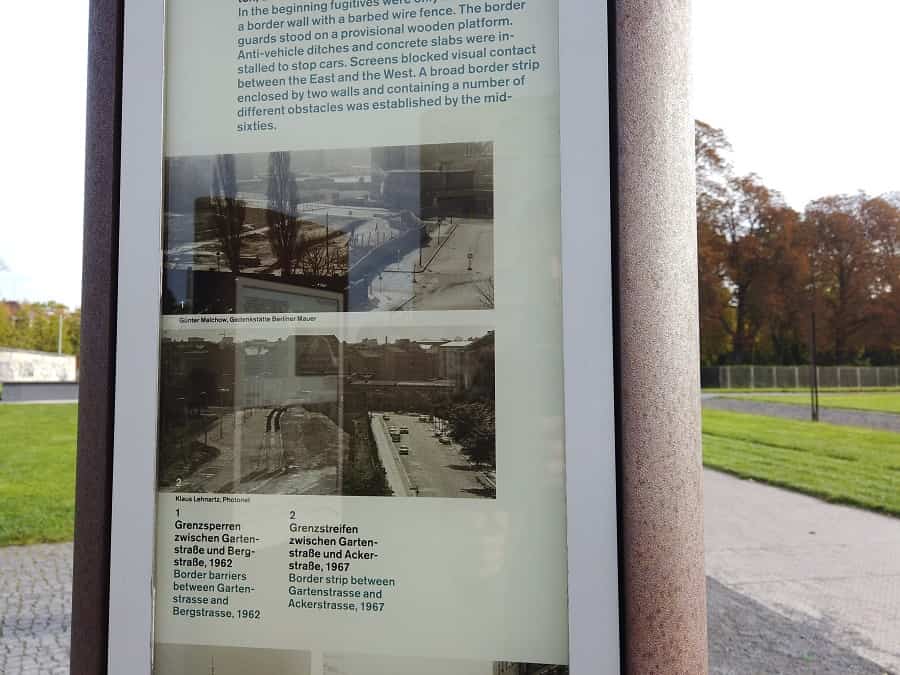
This moving memorial honors the victims of the GDR regime.
It also explains the many ways that its citizens tried to escape, including tunnels, and particularly for Bernauer Strasse, jumping from windows and roofs.
The memorial also explains the varied methods that the GDR regime cruelly used to keep its citizens from escaping.
The memorial is also the location of one of the most famous escape attempts.

It was captured for posterity when a photographer zoomed in on a young East German Soldier named Conrad Shuman as he lept over barbed wire and into the freedom of West Berlin.
In comparison to the East Side Gallery, the Berlin Wall Memorial is far more educational, and for most visitors, in our opinion, far more interesting.
With its documentation center, lookout tower , preserved death strip, and content stations, this memorial provides more details and context than the singular (though long) piece of the wall.
PLAN YOUR VISIT
The memorial consists of 3 main parts, a visitor center, a large outdoor exhibit, and a documentation center with a lookout tower.
The outdoor exhibit is the largest part and it is divided into 4 sections. We detail all of the exterior components in our main features section .
We recommend starting your visit at the Nordbanhof S-Bahn Station.
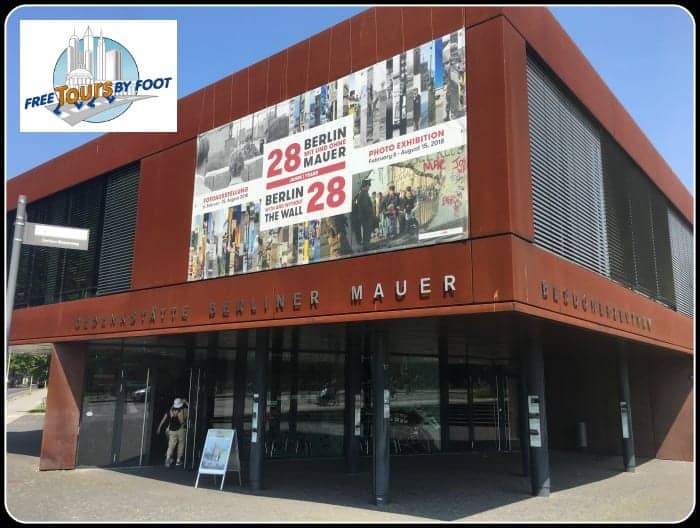
This is where the Berlin Wall Memorial starts and where the visitor center is located.
There is an exhibit inside of the Nordbahnhof S-Bahn Station titled "Ghost Stations".
Admission is free and you do not need a ticket to visit any parts of the Memorial.
Both the visitor and documentation centers offer free toilets and there is a small cafe located next to the Documentation Center.
The visitor center has a help desk, a small bookshop, an introductory film, and interactive guides that cover all Berlin Wall sights throughout the city.
There is no security check, but eating and drinking are prohibited in the Documentation Center.
When stepping inside the Church of Reconciliation you are also asked by signs to be quiet and respectful.
We summarize what you will see in our Main Features section, and t here are 3 audio tours that you can take with your smartphone: a 30-minute, 75-minute, and a 2-hour tour .
Hours of Operation
Outdoor Exhibit
- Daily from 8:00 am until 22:00 (10 pm)
Visitor and Documentation Centers
- Tues - Sun from 6:00 am until 18:00 (6 pm)
- Closed on Mondays
Nordbahnhof S-Bahn Station (Ghost Station Exhibit)
- Daily from 4:00 am until 1:00 am (the next day)
Best Times To Visit
Online reviews contain scant mentions of overcrowding or queuing, and we rarely notice any overcrowding when our tours come through.
You should consider avoiding Mondays, particularly if you would like the entire experience.
Another issue that visitors should be wary of is the weather, as most of the memorial is outdoors (all of it, if you visit on a Monday).
How Long Does a Visit Take?
Even a casual walk from end to end of the main outdoor exhibit can last at least 1 hour .
Add at least an additional 30 min to visit the visitor and documentation centers .
If one wishes to experience both the open-air gallery and the documentation center, then a visit may easily stretch to 2 hours in length.
How To Get To The Berlin Wall Memorial
The Berlin Wall Memorial is located on Bernauer Strasse between the S-Bahn Nordbanhof Station and the Bernauer Strasse U-Bahn Station, 2 stops north of Friedrich Strasse Station on the S-Bahn.
However you choose to come, we recommend using this Google Map link for directions to the visitor center.
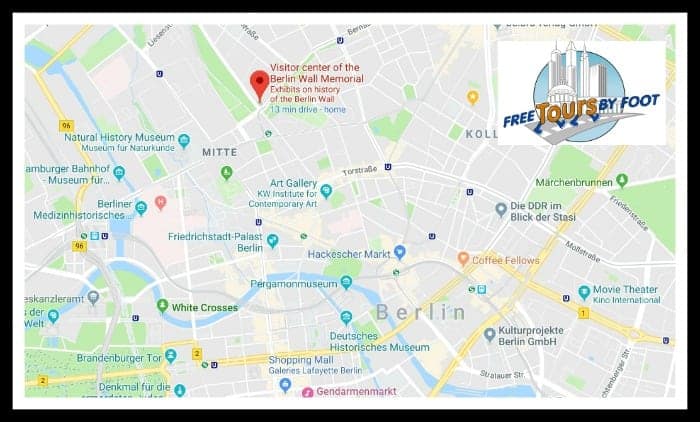
Nordbahnhof is an ideal station to start at due to its historical significance; it had exits in both West and East Berlin and thus became one of Berlin’s ghost stations, about which it now contains an interesting exhibition.
It is served by the S-Bahn (S1, S2, S25 & S26), trams (M10, M8, 12) and buses (247, N40).
If traveling by S-Bahn, just follow the signs for the Berlin Wall Memorial ( Gedenkstätte Berliner Mauer) , though we recommend spending some time at the exhibit on the ghost stations .
If you want further explanations for tackling Berlin’s public transportation system, check out our post about Navigating Berlin’s public transportation system .
WHAT YOU WILL SEE AND EXPERIENCE
In this section, we summarize what you will see and experience if you complete a walk of the memorial.
The outdoor memorial is split up into 4 main sections (A, B, C, D).
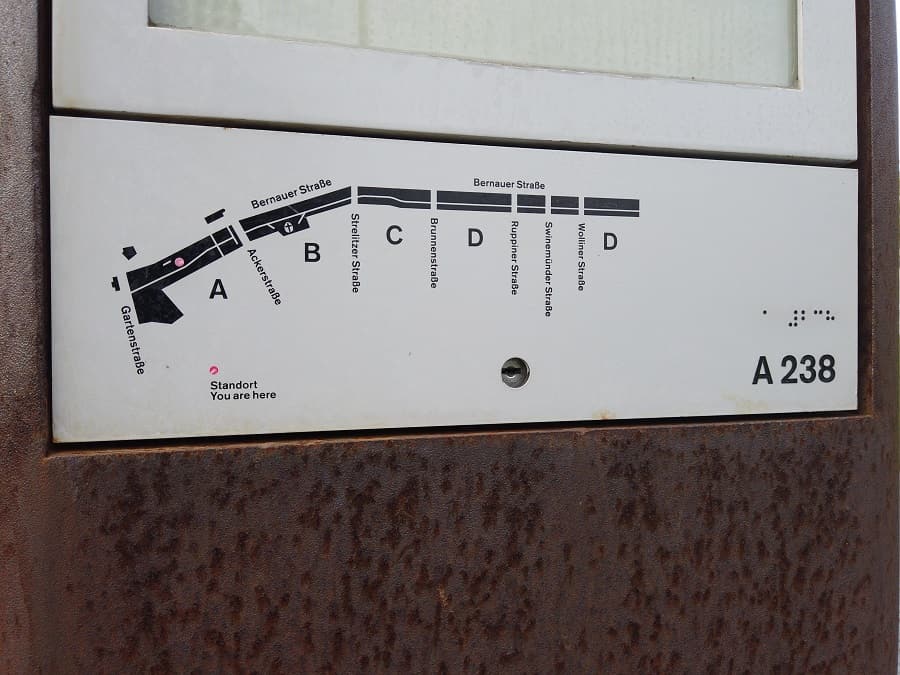
Each section has its own particular focus, but the content certainly overlaps from one section to another.
Area A - The Wall and Death Strip
- Area B - Destruction of the City
Area C - Building the Wall
Area D - Everyday Life at the Wall
If you don't have enough time to give this memorial your full attention, then Area A is where you should come.
Titled "The Wall and Death Strip", the overall focus of this section covers how the wall operated, how it changed the physical landscape, as well as its brutality.
This area has 4 subject stations , small areas where you have audio, visual, and text displays with stories, interviews, and eyewitness accounts.

The first station is called " The Wall and Border Strip ". This station covers why and how the Wall was built and reinforced.
It's in this area that you can start to envision the scale and scope of the border defense. Present in this area is both the outer and inner walls. You are walking on the death strip.
Station 2 is called " Blocking off Bergstrasse ". It's in this area that you will see the excavated remains of the part of Bergstrasse that was sacrificed to the Wall.
The Wall would ultimately create 300 dead-ends streets, cutting off communities and families from one another.

The 3rd station is titled " The Wall at Sophia Parish Cemetery ". Bergstrasse ran alongside the Sophia Parish Cemetery.
Today, the cemetery ends on the other side of the inner wall, but it used to reach Bernauer Strasse.
Many graves and tombs were uprooted and relocated deeper into the cemetery. Here is an audio clip with images.
The last station in Area A, " Window of Remembrance ", is arguably the most powerful.
There are no audio, visual, or text clips here. The wall contains photos of 130 individuals who had died at the Wall.
Most were killed attempting to escape East Berlin, but some were accidents, such as an 8-year-old boy from West Berlin who fell into the Spree and drowned.
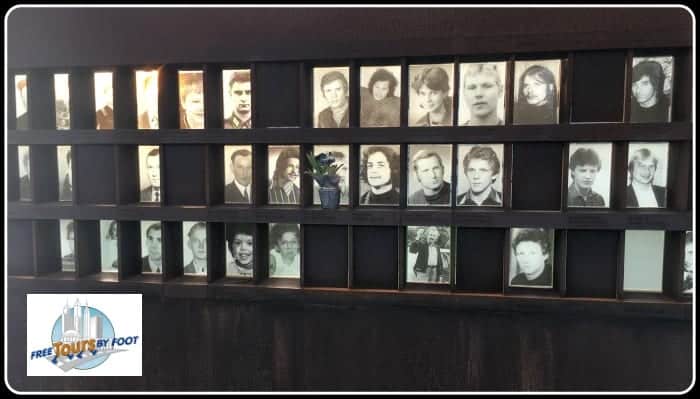
Each picture is accompanied by a name, a date of birth, and a date of death. Currently, there are 130 people documented here.
Additionally, there were 8 East German border guards who also died at the Wall and their names are inscribed on a column.
You may notice that some of the squares are empty. This was done on purpose to allow space for those who may be determined to have been victims of research proving that this was the case.
Although it's random, you may notice candles or flowers in front of the photographs. These are usually left here by family members or friends and are a stark reminder of how recent their deaths really were.
Area A has two additional and important components, the Documentation Center, with its lookout tower, and the Monument , a relatively well-preserved section of the intact border wall system, containing both an inner and outer wall, the death strip, and a watchtower.

You can get a great view of the Monument from the lookout tower across the street. There is an elevator, but most people should be able to handle the stairs.
In addition to the view of the Monument, the lookout tower also affords you great views of the entire memorial and part of the cityscape, including the TV Tower and the Berliner Dom.
Just a quick note, there are restrooms and a small cafe, and a souvenir stand at the Documentation Center.
Documentation Center
You can choose to visit the Documentation Center now or come back once you are done walking the memorial till its end.
Unlike the outdoor exhibits, it is only open from 10:00 am until 18:00 (6 pm) every day but Mondays.
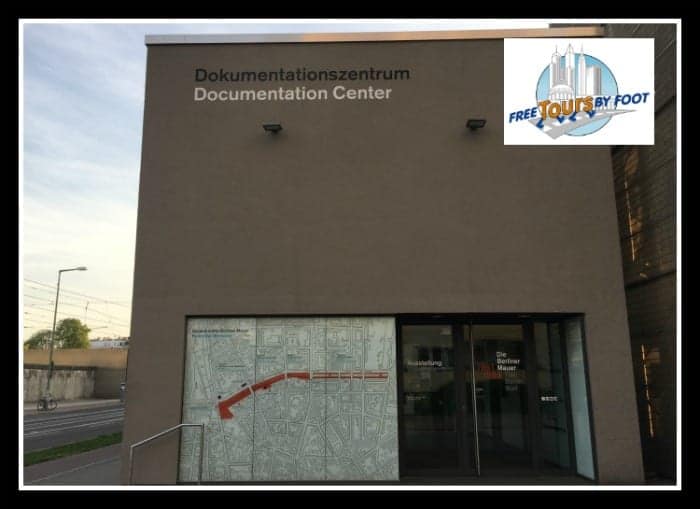
The center is dedicated to telling the story of the Wall, why it was built, maintained, and eventually destroyed, using multimedia displays, maps, documents, interviews, etc.
It's even more in-depth than the outdoor memorial itself. You could easily spend an hour here browsing the exhibits.
And check out our post on the best 60 museums in Berlin , many of which are free like the Documentation Center.
Area B - Destruction of the City
Area B moves the focus of the memorial to the people who lived here on Bernauer Strasse and the surrounding area, particularly those in East Berlin.
This section of the Memorial has 4 subject stations.
The first station is " Blocking Off of Ackerstrasse ".
Unlike the previous station dealing with the closing off of Bergstrasse, this station focuses more on the people who lived in the buildings that were taken down when the Wall was expanded.
Station 2, titled " The Reconciliation Church " covers the fate of one Protestant congregation, most of whose members lived in West Berlin.
Unfortunately, the gothic church was located on East Berlin land and would only be used for two more services after Aug 13, 1961, and ultimately was destroyed in the 1980s .
One other significant feature is the Chapel of Reconciliation , which is built upon the foundations of the Church of Reconciliation, which was trapped within the Berlin Wall upon erection, and ultimately destroyed.
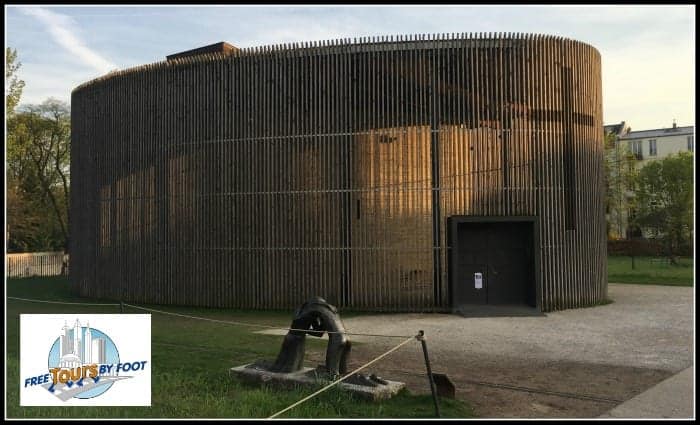
The chapel’s inner room is a quiet, respectful space that occasionally hosts services, whilst the outer space features exhibits discussing the church.
Station 3 is titled " The Suffering of the People " and its focus is on the apartment buildings that bordered Bernauerstrasse and West Berlin.
These buildings were used for early escapes, including the deaths of a few locals who jumped from the buildings' upper floors and roofs.
It was for this reason that the East German government evacuated their residents and eventually destroyed the buildings.
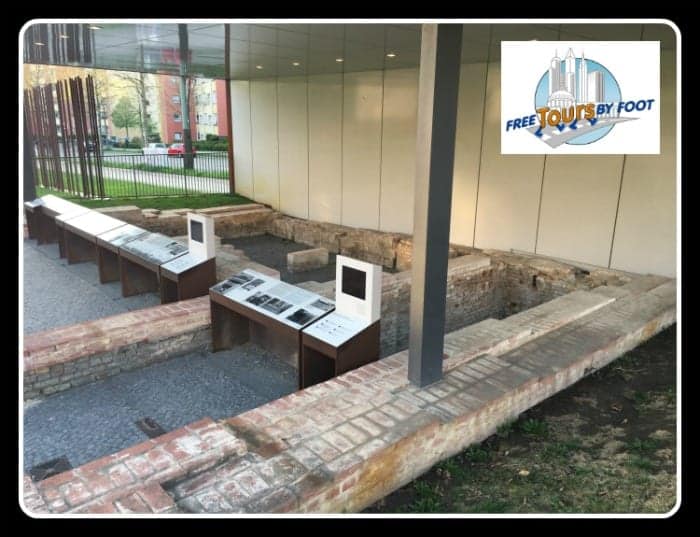
The main exhibit here is the excavated foundation of one of these buildings, Bernauerstrasse 10a .
Here you will find audio and visual aids that tell you the story of the residents of these border buildings, many of whom were cut off from family and close friends in West Berlin.
The final station on Area B is called "Escaping to the West", which chronicles some of the daring escape attempts that took place here on Bernauerstrasse.
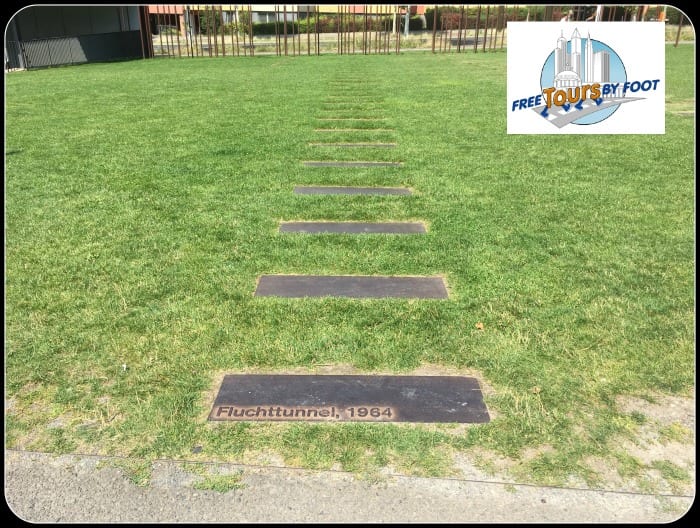
Most of these escape attempts were via tunnels . In all, there were 10 tunnels under the Wall here at Bernauerstrasse, though only 3 successfully freed any East Berliners.
There are many tunnel markers in this area, such as the one in the photo above.
This area of the memorial covers the evolution of the border wall's construction, reinforcement as well as how the East German government enforced security in the area just behind the border.
The subject station, " Rebuilding the Border Fortification ", covers the evolution of the Wall.
It covers how its builders analyzed escape attempts to make improvements to the border system, starting from a simple concrete wall with barbed wire to the more elaborate and impenetrable system that you have now probably come to understand better.
It's here more than anywhere that you can get a good sense of this evolution through photos, audio, and text.
The second subject station here is " Surveillance of the Border Area ".
Here you will learn how the GDR government spied on its citizens who lived just beyond the wall and how local residents were recruited to aid the government, mostly as informants, all in order to reduce the chances of successful escapes.
The last subject station here is called "the Wall at Brunnenstrasse", where you will find a large mural of one of the most iconic images of the wall.
It's the escape of Conrad Schumann, an East German border guard, who just a few days after the start of the Wall's construction made a daring leap over the border.
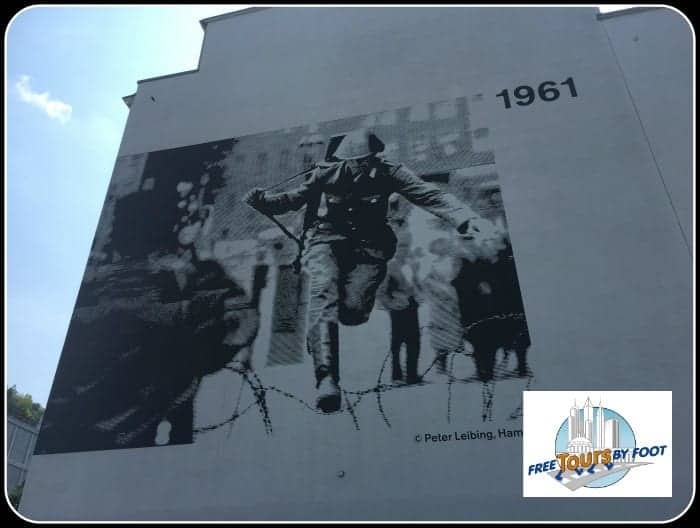
His jump was actually one street further on.
As with the other areas of the memorial, you will find several subject stations.
The first is titled " The Wall and West Berlin " and covers how the Wall affected those who lived in West Berlin, particularly those in the Wedding District, which lies on the West Berlin side of the Wall.
Station 2, " Escape Agents and Tunnel Builders " details several of the escape tunnels that were built from West Berlin under the Wall into East Berlin and those who dug and financed them.
Station 3, " The Border Soldiers ", covers the daily life of border guards and what their surveillance responsibilities were in keeping East Berlin citizens from fleeing the East.
The next station, " The Wall in Politics ", explains how West Berlin and West Germany portrayed the city and East Berlin in domestic and local politics and foreign diplomacy.
Choose a Destination... I want them all PLUS general travel tips. Amsterdam Berlin Boston Charleston Chicago Dubai Lisbon London Los Angeles Miami Nashville New York City New Orleans Paris Philadelphia Prague Rome San Francisco Washington DC
About The Author
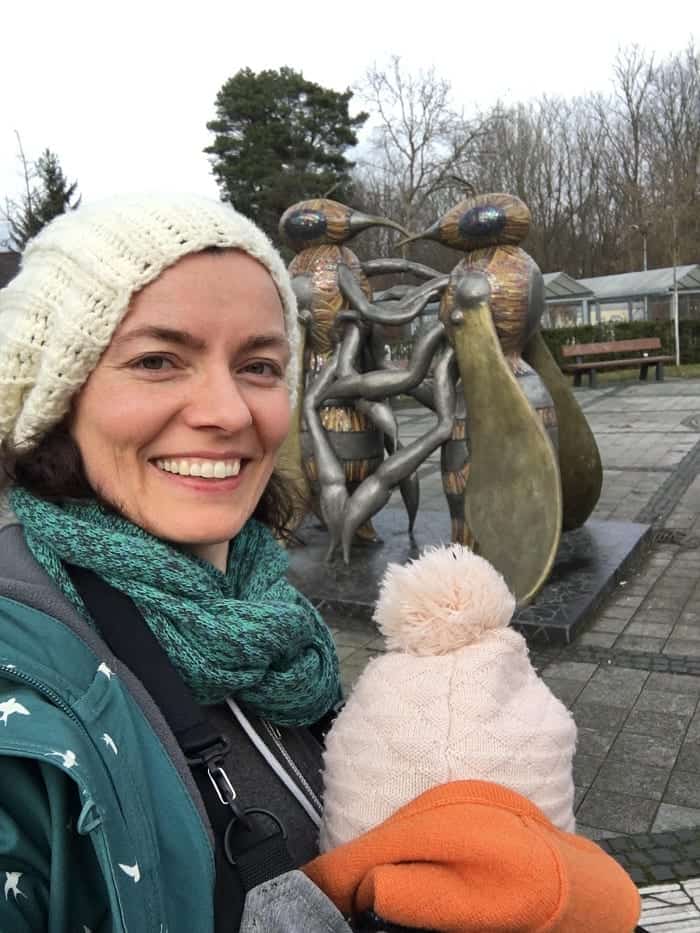
Anne Wittig

Walking tour
From berlin: original cold war east communism & world war ii third reich berlin wall walking tour.
The Original World War II Third Reich, Cold War East Communism & Berlin Wall Walking Tour is an immersive journey into the history that shaped our world and Berlin in particular. It serves as an ideal tour for those keen on understanding transformative events from a distinct perspective. This guided walking tour will take you through numerous landmarks, sites, and monuments, recounting stories that played pivotal roles in our collective past.
On this tour, you’ll get to immerse yourself in the narratives of the Cold War and World War II. Local guides will provide in-depth insights about life on the darker side of the Berlin Wall and the factors that shaped Berlin’s unique history. This exploration will also give you an opportunity to envision the realities of the past and understand their profound influence on our present and future.
If sightseeing in Berlin is your aim, this tour stands out as one of the best options. Berlin’s tourism is not only rich in history and politics but also mirrors how our world has progressed towards becoming a more inclusive and better place for everyone. Experience the mysteries and realities of the past with The Original World War II Third Reich, Cold War East Communism & Berlin Wall Walking Tour, and discover a side of Berlin that has played a crucial part in shaping our world.
TOUR DETAILS
When: Every Wednesday, Thursday, Friday and Saturday at 12:00
Where : The meeting point is in front of Generator Berlin Alexanderplatz, Otto-Braun-Straße 65, 10178 Berlin, Germany. Next to the Entrance.
ADDITIONAL INFORMATION
- Guests will need a valid ABC transit ticket
- Bringing a snack and beverage is suggested as limited options are available
- Eastside Gallery
- Berlin Wall Memorial
- Guard Towers
- Hidden Sections of The Berlin Wall
- Berlin Wall Escape Routes
- Hidden Berlin Wall Effects
- West Berlin & The DDR
- The Berlin Wall Route Today
- GDR / DDR Historical Landmarks
- Escape Attempts
- Crossing Points
- Life In the GDR / DDR
- German Reunification
- Cold War Sites
- The Palace of Tears (Tränenpalast)
- Ghost Stations
- Battle of Berlin
- the Reichstag
- the russian-german war museum
- awesome local history guides
- History of WWII in berlin
- the third reich capital
- prenzlauer berg
- the site of hitler’s bunker
- and much more…
THE ORIGINAL COLD WAR EAST COMMUNISM & WORLD WAR II THIRD REICH BERLIN WALL WALKING TOUR
Embark on a historical adventure with our Original World War II Third Reich, Cold War East Communism, and Berlin Wall Walking Tour. This tour provides a unique perspective on the transformative events and narratives that have deeply impacted our nation and its cities.
Our knowledgeable guides will weave a rich tapestry of tales, such as the infamous underground hideout of Hitler and the aftermath of thousands of allied bombings. You will also get to see the defensive structures that were built to protect the city. We will journey through numerous World War II historical sites and memorials, each providing a vivid snapshot of the past.
Included in this experience is the Original Cold War East Berlin Communism and Berlin Wall Tour. It’s specially designed for a thorough, hands-on exploration of the intricate connections between our past, present, and future. As we journey through a variety of significant destinations, we will learn about the historical milestones that precipitated shifts in power from one era to another.
Throughout the tour, you’ll have the chance to delve into the history of the Berlin Wall and spend a day exploring what life was like on its darker side. Our guides will engage you with a multitude of stories from various landmarks, sites, and monuments. Despite the wealth of history we will uncover, the tour maintains a relaxed pace, with opportunities for breaks and refreshments.
Join us on this captivating journey as we unravel the enigmas of our past that have extensively shaped our present and future. Witness history come alive with the Original World War II Third Reich, Cold War East Communism, and Berlin Wall Walking Tour. Book your tour with us today, and experience history in a way you never have before.
Why Tour With Us?

Diverse Destinations
With expertise in local culture and history, our diverse destinations bring you an authenticity beyond the reach of any other travel company

Terrific Tour Guide
Each tour guide brings something unique to the table – one of which is being terrific!

Scenic Sights
When travelling, scenic sights are a must that even we cannot compromise.

Instant Support
Travelling gives rise to queries, concerns, and doubts; so we make sure that we’re always here to put your mind at ease
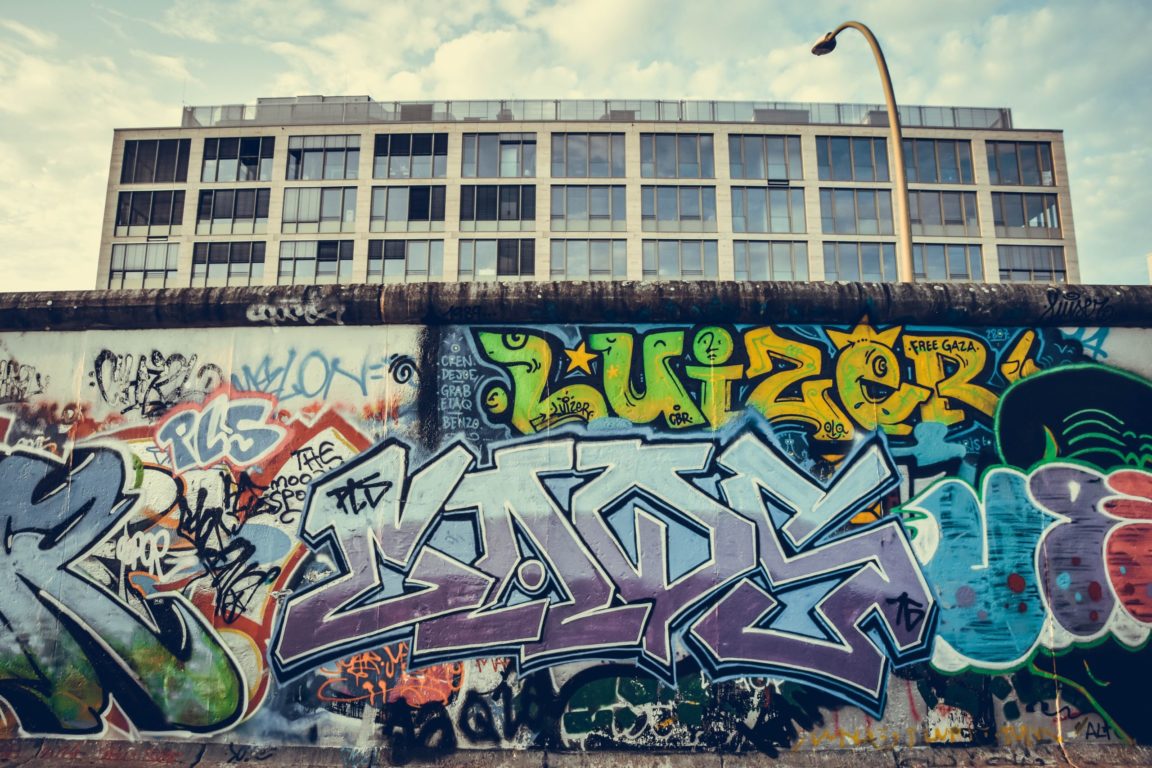
Cold War East Communism Berlin Wall Tour
Discover the city’s less-known history and its involvement with Cold War espionage. From Prussian kings to the victorious Allied leaders of World War II, see the Cecilienhof and Sanssouci palaces, and understand why Potsdam is a city of UNESCO World Heritage with an expert guide.
Check out our other cities
Berlin tours.
- Original Berlin Tours
- Berlin Pub Crawl
- Pub Crawl Berlin
- Free Berlin Tours
- More Berlin Tours
- Cold War Tour Berlin
- World War Tour Berlin
- Sachsenhausen Tour
Barcelona Tours
- Free Barcelona Tours
- Barcelona Pub Crawl
- Pub Crawl Barcelona
Budapest Tours
- Free Budapest Tours
- Budapest Bar Crawl
- Pub Crawl Budapest
Madrid Tours
- Madrid Pub Crawl
- Pub Crawl Madrid
- Nice Pub Crawl
- Nice Bar Crawl
- Pub Crawl Nice
Amsterdam Tours
- Amsterdam Pub Crawl
- Bar Crawl Amsterdam
Paris Tours
- Pub Crawl Paris
Dublin Tours
- Pub Crawl Dublin
Warsaw Tours
- Pub Crawl Warsaw
Stockholm Tours
- Pub Crawl Stockholm
Other Links
- Original Pub Crawls
- Be Original Tours
- Original Free Tours
- E-Ticket Trail
WhatsApp us

IMAGES
VIDEO
COMMENTS
Jannowitzbrücke was the first ghost station to reopen to passenger traffic on November 11, 1989, two days after the fall of the wall. Equipped with a checkpoint within the station, East German ...
1. Nordbahnhof. Nordbahnhof, located in the district of Mitte, is one of the most well-known ghost stations in Berlin. This station was closed after the construction of the Berlin Wall in 1961, as it found itself stranded in the "death strip" between East and West Berlin. The station remained closed until the fall of the Berlin Wall in 1989.
The stations those trains passed soon became known as 'ghost stations' amongst Berliners—dimly lit stops where armed East German border guards would peer at passengers through slits in bricked up huts. East German guards filmed at Potsdamer Platz by Max Gold (see end of article for video/link). Due to the geography of the boroughs of ...
When the Wall was built, many S-Bahn and U-Bahn stations in Berlin became so-called ghost stations. Participants will follow in the footsteps of the ghost stations in and around Nordbahnhof and have the exclusive opportunity to visit a pedestrian tunnel that has been closed since 1952.
The Berlin ghost stations, their seemingly perfect security against so-called border violators, and the sealing off of the sewage system against underground escape attempts are also extensively covered. ... After the tour we recommend a visit to the Berlin Wall Memorial documentary centre. Special Advice, Equipment. Special Advice, Equipment ...
Well, in 1961 the Berlin Wall was built right next to the station and this and others became "ghost stations." Trains from the West ran through here without stopping for almost 30 years. The only people allowed on this platform were East Germany Border Security Guards. So the stations like Nordbahnhof ended up being preserved in amber, as it were.
June 2024. Due to the construction of the Wall, many S-Bahn and U-Bahn stations in Berlin became so-called ghost train stations. Participants follow in the footsteps of ghost train stations in and around the Nordbahnhof and have the exclusive opportunity to visit a pedestrian tunnel that has been closed since 1952.
The exhibition "Border Stations and Ghost Stations in Divided Berlin" is the first part of the permanent exhibition in the outdoor area of the Berlin Wall Memorial that will be created by 2012. The expansion will make the memorial a central place of remembrance for the division of Germany and the Berlin Wall. Route.
When the Wall was built, many S-Bahn and U-Bahn stations in Berlin became so-called ghost stations. Participants will follow in the footsteps of the ghost stations in and around Nordbahnhof and have the exclusive opportunity to visit a pedestrian tunnel that has been closed since 1952.Translated with DeepL
Dates, tickets, info • Ghost stations in divided Berlin • Leadership • Gedenkstätte Berliner Mauer• Order tickets online or by telephone.
Highlights. See the open-air Berlin Wall Memorial and the former "death strip". Stand above the site of two of the most successful escape tunnels to be dug under the Wall. Travel through underground stations dubbed "ghost stations" in the Cold War era, and discover what ordinary life was like in a city that was divided for almost 50 years.
Border Stations and Ghost Stations in Divided Berlin. An exhibition in the Nordbahnhof S-Bahn station focuses on a special chapter in Berlin's history of division: the three U-Bahn and S-Bahn lines that crossed through East Berlin on their way from one end of West Berlin to another. Between 1961 and 1989 these lines had a special status ...
When the Wall was built, many S-Bahn and U-Bahn stations in Berlin became so-called ghost stations. Participants will follow in the footsteps of the ghost stations in and around Nordbahnhof and have the exclusive opportunity to visit a pedestrian tunnel that has been closed since 1952. ... Ghost stations in divided Berlin Guidance. Guided Tour ...
When the Wall was built, many S-Bahn and U-Bahn stations in Berlin became so-called ghost stations. Participants will follow in the footsteps of the ghost stations in and around Nordbahnhof and have the exclusive opportunity to visit a pedestrian tunnel that has been closed since 1952. Meeting point: Visitor Center of the Berlin Wall Memorial.
The stations were furbished and re-opened to the public shortly after the fall of the Berlin Wall and today's passengers rarely know they are stepping out of the train at a former ghost station. Your tour guide will reveal the ghost-stations to you on our Cold War Berlin free tour .
guided tour. Due to the construction of the Wall, many S-Bahn and U-Bahn stations in Berlin became so-called ghost train stations. Participants follow in the footsteps of ghost train stations in and around the Nordbahnhof and have the exclusive opportunity to visit a pedestrian tunnel that has been closed since 1952.
S-Bahnhof Nordbahnhof. Am Nordbahnhof 10115 Berlin. Show on Google Maps. The trains would slow down, but they did not stop at these deserted stations in East Berlin. Blocked off and patrolled by GDR armed guards, they became known as "ghost stations.". The Friedrichstrasse station with its border checkpoint was the one exception.
Etymology. The term "ghost station" is a calque of the German word Geisterbahnhof (plural Geisterbahnhöfe).The German term was coined to describe certain stations on Berlin's U-Bahn and S-Bahn metro networks that were closed during the period of Berlin's division during the Cold War because they were an integral part of a transit line mostly located on the other side of the Berlin Wall.
Berlin's best private guided tours since 2007. Step back in time and discover life in divided Berlin, walk along the Berlin Wall and recount spy stories from the Cold War capital. ... Former Berlin Ghost Stations TV Tower & Alexanderplatz Communist ideology, Propaganda, & Art 17th June 1953 Uprising Karl Marx Allee - Former Stalin Allee
As far as I'm aware for institutions, Stiftung Berliner Mauer (Berlin Wall Foundation) offers a guided tour only in German: "Geisterbahnhöfe im geteilten Berlin" (ghost stations in divided Berlin) : German url - English url. You can also visit the foundation's own exhibit inside the operating Nordbahnhof S-Bahn station, which is situated next to the foundation's memorial site at Bernauer Strasse.
I start right at the beginning of the U6, at Alt-Tegel, which opened as Tegel station in 1958 as part of a northern extension of the U6, which had existed since 1923 as the north-south line between Seestrasse and Tempelhof.In 1992, the station was renamed Alt-Tegel (Old Tegel). As it's the end of the line, it comprises eight exits, and is an important feeder in summer for people visiting the ...
It is served by the S-Bahn (S1, S2, S25 & S26), trams (M10, M8, 12) and buses (247, N40). If traveling by S-Bahn, just follow the signs for the Berlin Wall Memorial (Gedenkstätte Berliner Mauer), though we recommend spending some time at the exhibit on the ghost stations. If you want further explanations for tackling Berlin's public ...
The Original World War II Third Reich, Cold War East Communism & Berlin Wall Walking Tour is an immersive journey into the history that shaped our world and Berlin in particular. It serves as an ideal tour for those keen on understanding transformative events from a distinct perspective. ... Ghost Stations; Battle of Berlin; the Reichstag; the ...
Tickets ab 53.43 € online oder telefonisch auf Berlin.de bestellen. Mittwoch, 29. Mai 2024, 15:30 Uhr • U-Bahn-Station Kottbusser Tor. Casino 36 • Food Tour: Kreuzberg kulinarisch. Weitere Termine und Informationen im Veranstaltungskalender von Berlin.de